Listen to the home owner! People like this give me a warm fuzzy feeling inside
↧
Net (2) Listen to the home owner
↧
Microhyla nepenthicola adult, tadpoles, habitat, and a bonus dragon snake.
These were taken by my partner while we were in Borneo a few weeks ago, figured a few people may be interested.
Microhyla nepenthicola is a highly specialized microhylid frog that has evolved to live out it's life in and around the pitchers of Nepenthes ampullaria. They lay eggs inside the ampullaria pitchers (which have actually evolved to catch leaf litter in this species, not small animals, but that's another story....), the tadpoles develop inside, and the adult males display and compete nearby for females that they mate inside the pitchers. The 'Dragon snake' or Rough backed litter snake (Xenodermus javanicus, google it for amazing photos, it's an incredible species) is a frog specialist that is usually (always?) found within 10 meters of water, on or under the leaf litter - and here it is waiting for its dinner. The dragonsnake itself is generally considered rare, and finding one curled up around an ampullaria colony (I'm a nepenthes nut) that contained the tadpoles of Asia's smallest frog made my night (possibly even week, but we did find some pretty cool stuff every other night.....).
Dragonsnake amongst pitchers:
Image may be NSFW.
Clik here to view.
M. nepenthicola male - we found two and heard but couldn't locate another within the same 20cm square patch of leaf litter.
Image may be NSFW.
Clik here to view.
Second male, beside a $2 coin for size reference.
Image may be NSFW.
Clik here to view.
1 of 3 tadpoles, about 2mm long, in this ampullaria pitcher.
Image may be NSFW.
Clik here to view.
Microhyla nepenthicola is a highly specialized microhylid frog that has evolved to live out it's life in and around the pitchers of Nepenthes ampullaria. They lay eggs inside the ampullaria pitchers (which have actually evolved to catch leaf litter in this species, not small animals, but that's another story....), the tadpoles develop inside, and the adult males display and compete nearby for females that they mate inside the pitchers. The 'Dragon snake' or Rough backed litter snake (Xenodermus javanicus, google it for amazing photos, it's an incredible species) is a frog specialist that is usually (always?) found within 10 meters of water, on or under the leaf litter - and here it is waiting for its dinner. The dragonsnake itself is generally considered rare, and finding one curled up around an ampullaria colony (I'm a nepenthes nut) that contained the tadpoles of Asia's smallest frog made my night (possibly even week, but we did find some pretty cool stuff every other night.....).
Dragonsnake amongst pitchers:
Image may be NSFW.
Clik here to view.

M. nepenthicola male - we found two and heard but couldn't locate another within the same 20cm square patch of leaf litter.
Image may be NSFW.
Clik here to view.

Second male, beside a $2 coin for size reference.
Image may be NSFW.
Clik here to view.

1 of 3 tadpoles, about 2mm long, in this ampullaria pitcher.
Image may be NSFW.
Clik here to view.

↧
↧
Darling Downs Herpetological Society field Herping pics.
Just a couple of pics from a recent Herp outing. Please share your own pics if you also went on the outing?
- - - Updated - - -
Image may be NSFW.
Clik here to view.![Click image for larger version.
Name: image.jpg
Views: 13
Size: 176.2 KB
ID: 301115]() Image may be NSFW.
Image may be NSFW.
Clik here to view.![Click image for larger version.
Name: image.jpg
Views: 10
Size: 177.4 KB
ID: 301116]() Image may be NSFW.
Image may be NSFW.
Clik here to view.![Click image for larger version.
Name: image.jpg
Views: 34
Size: 147.5 KB
ID: 301117]() Can anybody id the reptile in the last pic? ;)
Can anybody id the reptile in the last pic? ;)
- - - Updated - - -
Image may be NSFW.
Clik here to view.
Clik here to view.
Clik here to view.
↧
Wanted: pictures of V. acanthurus habitat
Dear Users,
i am a german reptile fan and about to keep a pair of Varanus acanthurus, but I need some inspiration in building my terrarium.
My biggest problem is the backwall for the moment, thats why I would like to get some pictures of rock walls maybe from the Pilbara or the Kimberleys or any other places where Varanus acanthurus lives.
I would be very happy if someone can send me some pictures to get a better impression. I've been to Australia last year, but I couldnt take pictures of these regions, because I lost my camera recharger :/ thats why I'm asking u guys for help!
Cheers,
Philipp
i am a german reptile fan and about to keep a pair of Varanus acanthurus, but I need some inspiration in building my terrarium.
My biggest problem is the backwall for the moment, thats why I would like to get some pictures of rock walls maybe from the Pilbara or the Kimberleys or any other places where Varanus acanthurus lives.
I would be very happy if someone can send me some pictures to get a better impression. I've been to Australia last year, but I couldnt take pictures of these regions, because I lost my camera recharger :/ thats why I'm asking u guys for help!
Cheers,
Philipp
↧
Herping at Phillip Island
Hi guys,
I'm going helping at Phillip Island this weekend and I was just wondering if there was anything I should look out for? I'm hoping to see a few Blotched Blue tongues and a lot of small skink species.
I will post some pics when I get back :D
I'm going helping at Phillip Island this weekend and I was just wondering if there was anything I should look out for? I'm hoping to see a few Blotched Blue tongues and a lot of small skink species.
I will post some pics when I get back :D
↧
↧
Quick Drive
Haven't done much in the way of herping lately but I went for a quick drive Thursday night and came across a nice coastal and my first Black Headed Python :) Hopefully I'll have a few more pictures before the end of the wet season.
Image may be NSFW.
Clik here to view.![]()
Image may be NSFW.
Clik here to view.![]()
Image may be NSFW.
Clik here to view.![]()
Image may be NSFW.
Clik here to view.![]()
Image may be NSFW.
Clik here to view.![]()
Image may be NSFW.
Clik here to view.

Image may be NSFW.
Clik here to view.
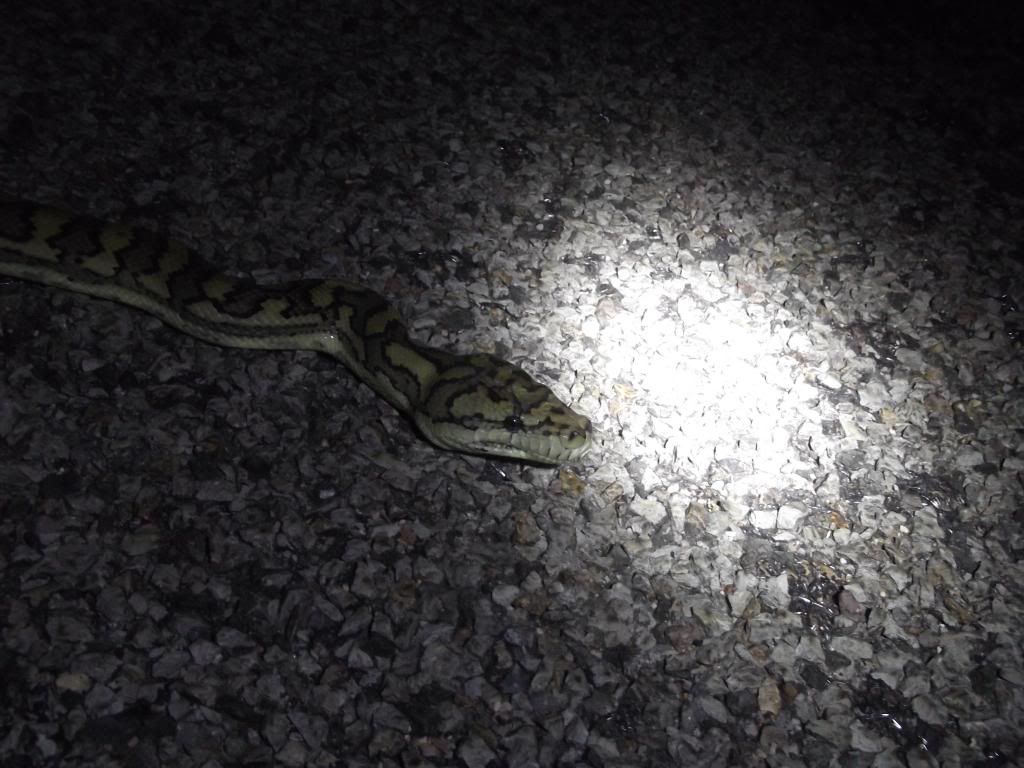
Image may be NSFW.
Clik here to view.

Image may be NSFW.
Clik here to view.
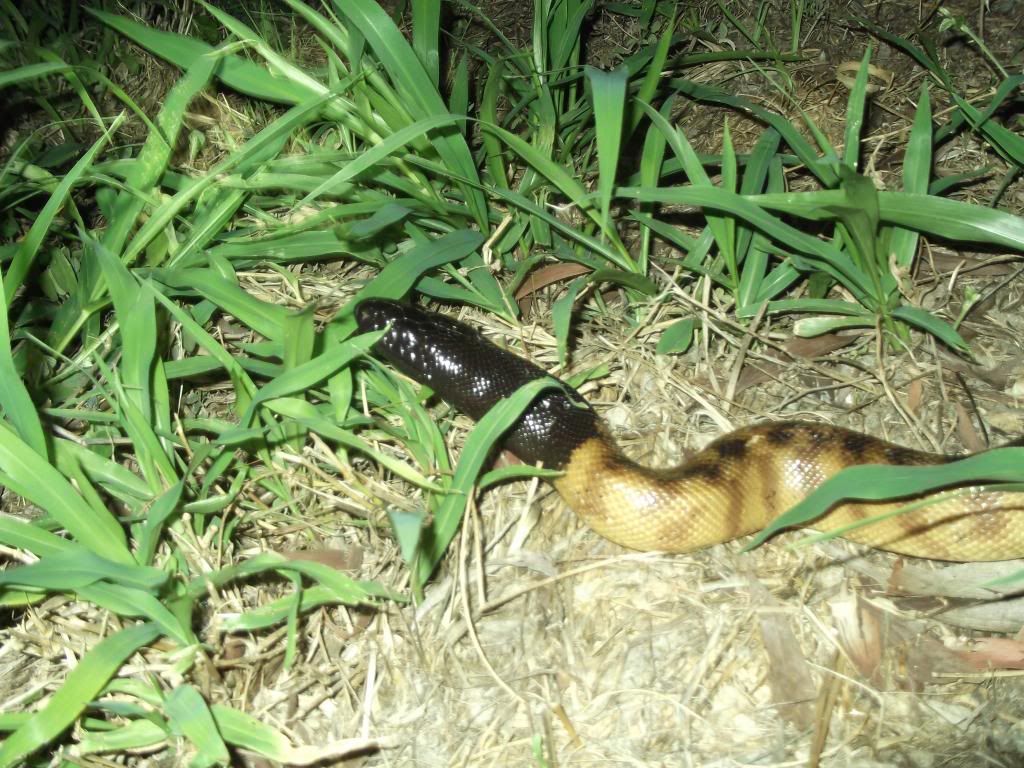
Image may be NSFW.
Clik here to view.
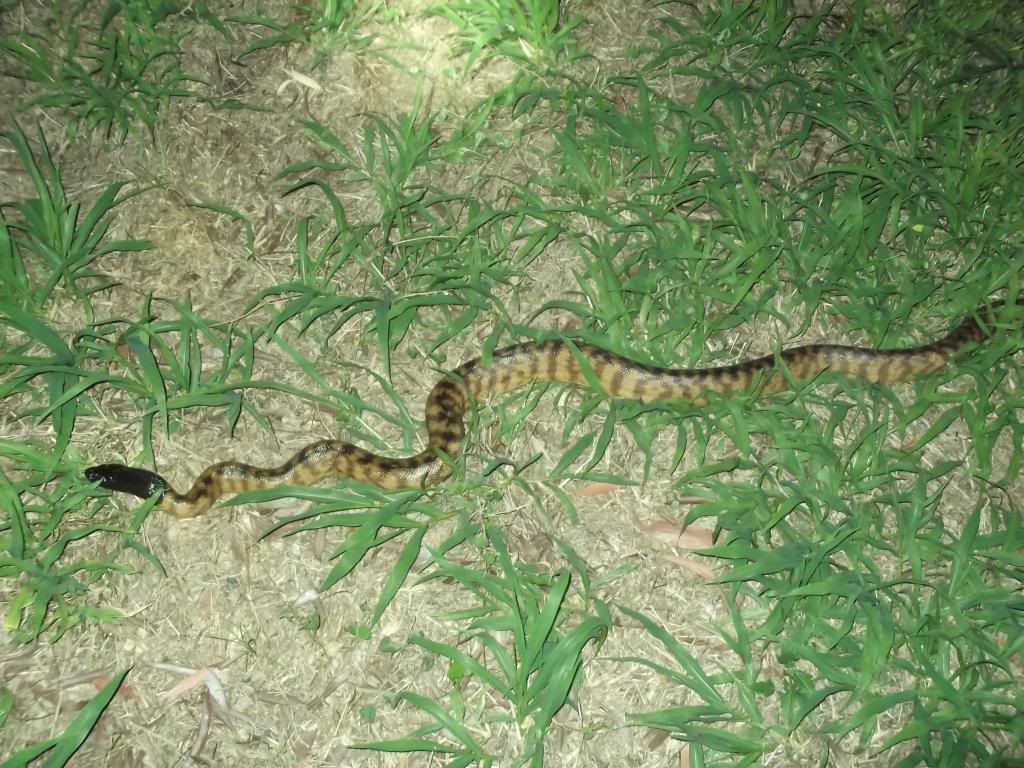
↧
A few recent finds....
Inspired by Chanzey's post I thought I would share a few recent finds as well...
Ornate Dragon
Image may be NSFW.
Clik here to view.![]()
Image may be NSFW.
Clik here to view.![]()
Image may be NSFW.
Clik here to view.![]()
Common Scaly Foot
Image may be NSFW.
Clik here to view.![]()
Image may be NSFW.
Clik here to view.![]()
Image may be NSFW.
Clik here to view.![]()
Bardick
Image may be NSFW.
Clik here to view.![]()
Image may be NSFW.
Clik here to view.![]()
Image may be NSFW.
Clik here to view.![]()
Image may be NSFW.
Clik here to view.![]()
Burtons Legless Lizard
Image may be NSFW.
Clik here to view.![]()
Image may be NSFW.
Clik here to view.![]()
A very bad pic of a wheatbelt.
Image may be NSFW.
Clik here to view.![]()
Ornate Dragon
Image may be NSFW.
Clik here to view.

Image may be NSFW.
Clik here to view.
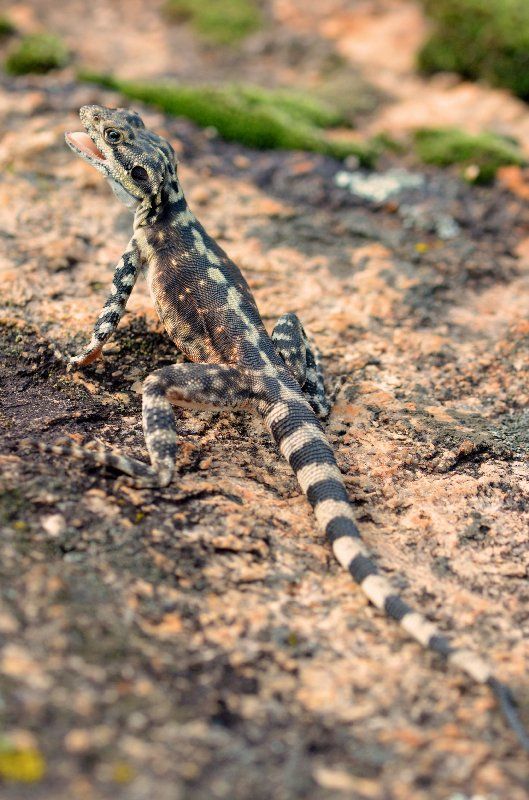
Image may be NSFW.
Clik here to view.
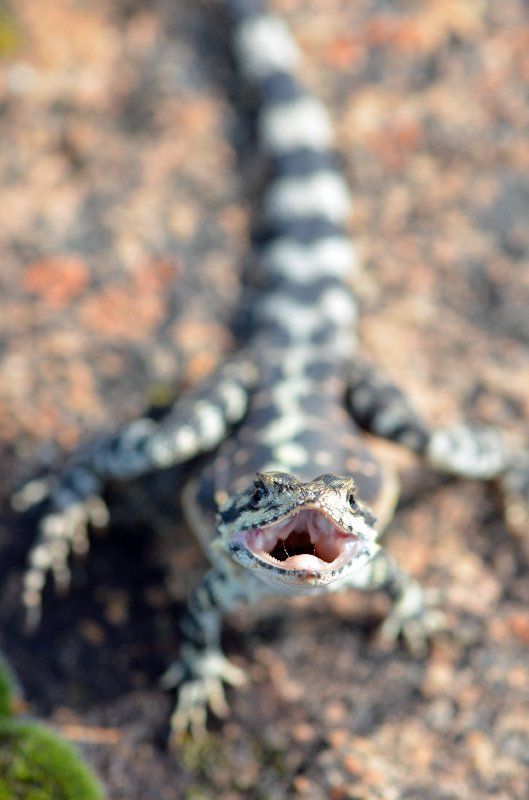
Common Scaly Foot
Image may be NSFW.
Clik here to view.
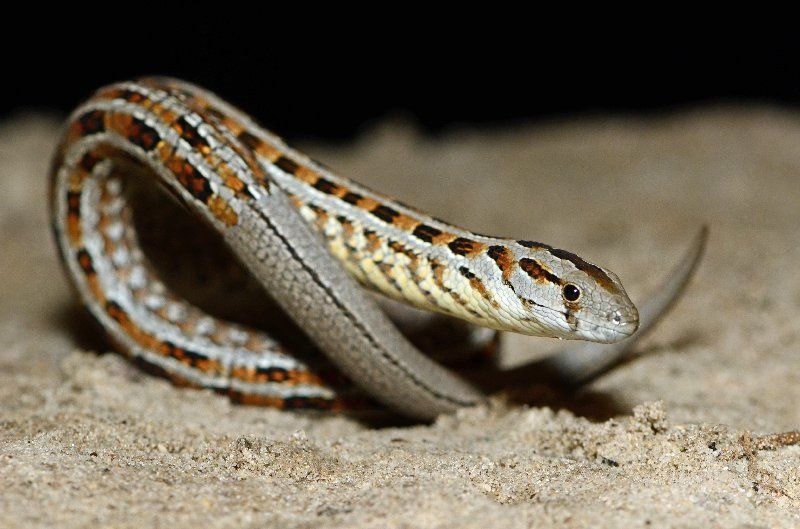
Image may be NSFW.
Clik here to view.
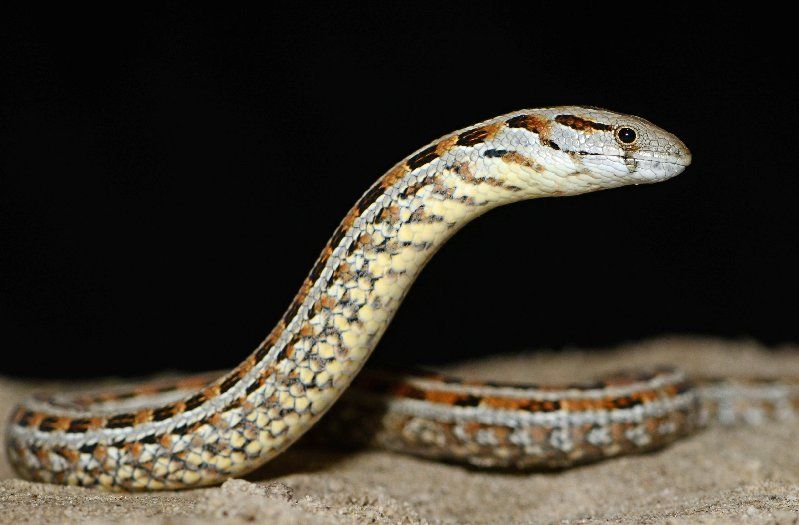
Image may be NSFW.
Clik here to view.
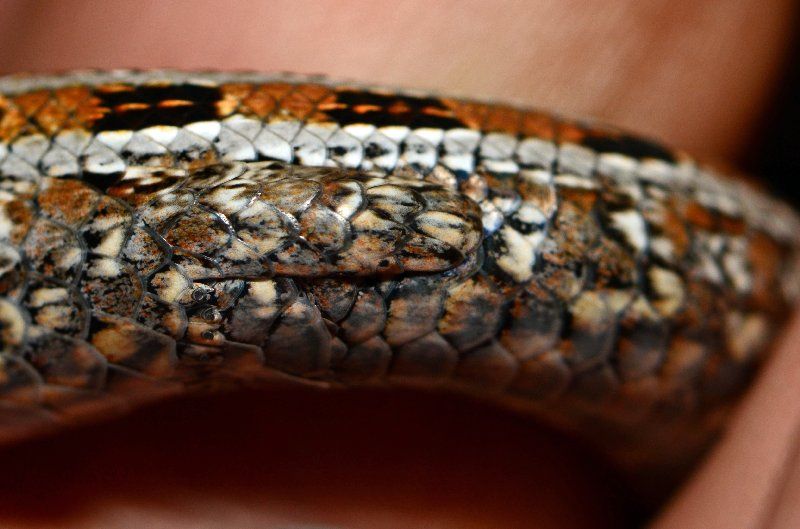
Bardick
Image may be NSFW.
Clik here to view.
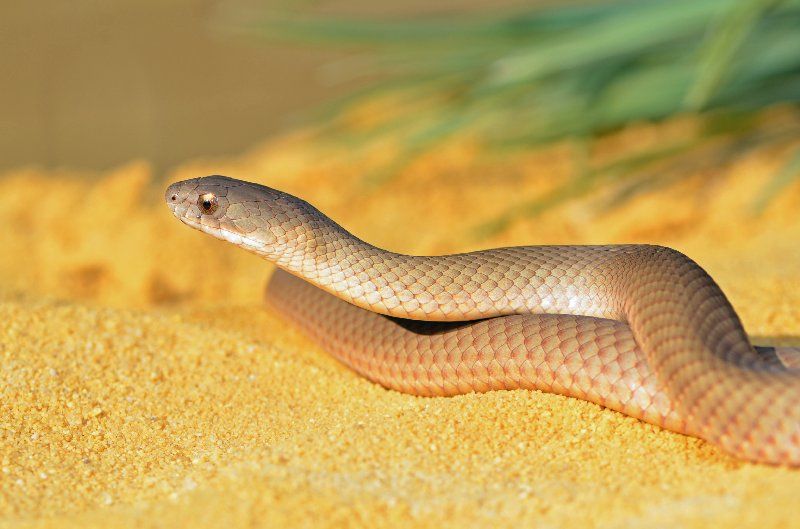
Image may be NSFW.
Clik here to view.
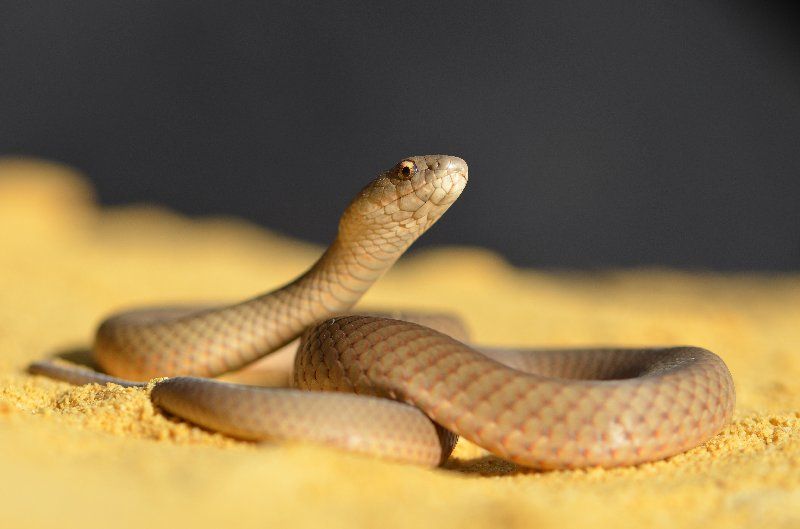
Image may be NSFW.
Clik here to view.
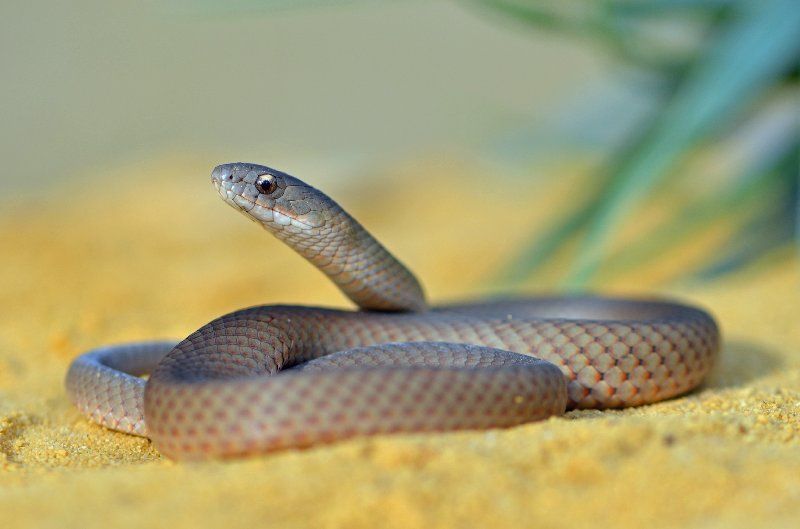
Image may be NSFW.
Clik here to view.
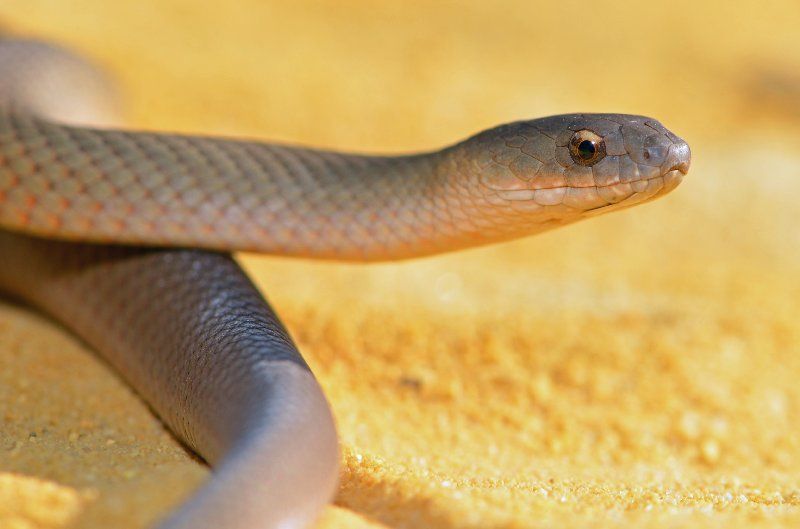
Burtons Legless Lizard
Image may be NSFW.
Clik here to view.

Image may be NSFW.
Clik here to view.
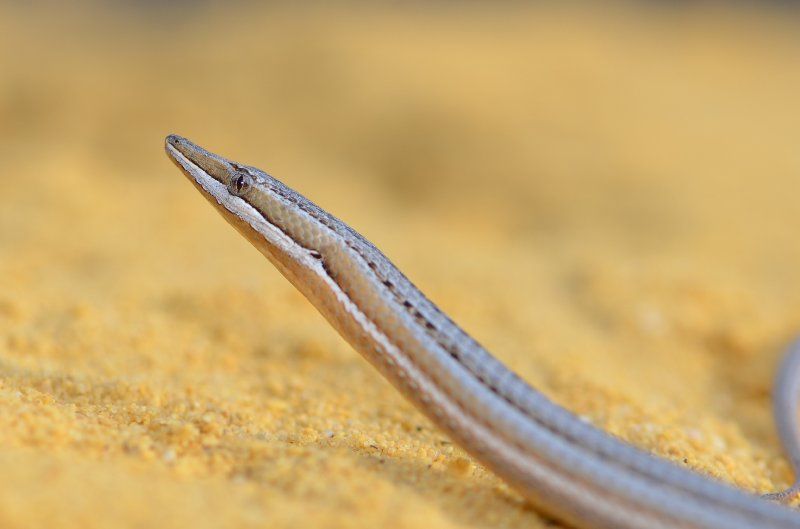
A very bad pic of a wheatbelt.
Image may be NSFW.
Clik here to view.
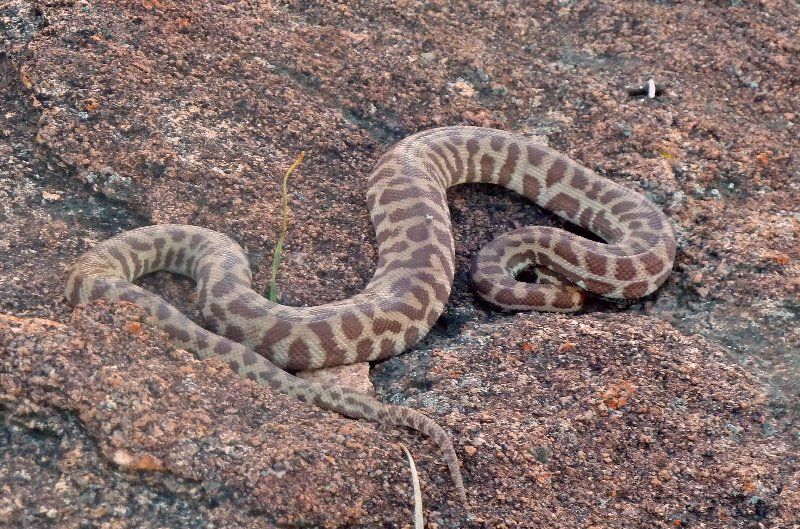
↧
Wine
A box or wine for that special someone - An ex-girlfriend, a real estate agent or your Boss (if you have one - I don't ;) )
↧
2-WEEK TOUR OF ASIA-Oct'13 (Oman, Thailand, Indonesia, Australia + Malaysia)
My apologies for anyone who has already seen this post from Field Herp Forum but I thought I would include it here too....
I have finally got time to sit down and do a write-up of a trip me, my girlfriend and friends and family members did in October. It was a combination of business, pleasure and everything in between as different people were going on the the trip for different reasons and the aim was to keep everyone happy. Needless to say I was the only member of the trip intent on herping so it was with some trepidation of how much compromise would be necessary that we all departed the UK for our first stop - 1 night in Oman.
Oman - a really interesting country that I would love to go back to with more than 18hours to spare. Our taxi driver was a real character and soon warmed to his task of pointing out every mosque, palace, souk, hilltop or otherwise to us on our way to the hotel. We made all the appropriate noises an appreciative tourist should make and he got so enthused by this that he tried to take us to his house for tea and played a game called 'Run down the pedestrians' in the back alleys. Further description of this game is in the link on the photo...
Image may be NSFW.
Clik here to view.![]()
???????? by Kristian Bell, on Flickr
After checking in and having a few beers it was time for bed, though not before I had found and photographed at least one reptile. After sitting in air-conditioned luxury and sipping cold beer for a few hours the 40-degree windless night time heat was hard to deal with, and within minutes I was dripping with sweat. There were geckos absolutely everywhere but it turns out my camera had taken the transition from air-conditioning to stifling heat even worse than I had, and constantly fogged up within microseconds of me wiping the lens clear. As such I only managed one useable shot...(ID is tentative as this is my first time herping in this area).
Image may be NSFW.
Clik here to view.![]()
Southern tuberculated gecko (Bunopus tuberculatus) by Kristian Bell, on Flickr
The next day it was off to our first proper destination, Koh Samui in Thailand, where we were to meet up with my 2 brothers, who both live in the country - having fallen for the charms of the local women/boys/ladyboys. The idea was to spend one day shopping for knock off designer t-shirts (my idea of hell but believe it or not this was one of the prime motivations of one of my fellow travelers on the trip), one day visiting my brothers house on Koh Tao and one day to relax. I have spent a bit of time herping on Koh Tao and Koh Samui is more populated and polluted so I wasn't too bothered about going crazy with herping here. Nevertheless I hired a scooter for the day and my girlfriend and I hit the only patches of decent forest I could find in the interior. Within minutes, and right within the densest patch of forest the road passed through, we had come across a snake crossing the road.
These guys are common both on roads and ground into roads so I am posting an old pic taken on Koh Tao a few years ago.
Image may be NSFW.
Clik here to view.![]()
Oriental Whipsnake (Ahaetulla prasina) by Kristian Bell, on Flickr
Despite this early success the rest of the day was extremely slow going and I was dismayed at the lack of decent habitat even well into the interior of the island. By nightfall we hadnt improved on our total, though did manage to find a few amphibians in a small stream.
Not sure of the ID on these guys Image may be NSFW.
Clik here to view.![]()
Unknown frogs in amplexus by Kristian Bell, on Flickr
Image may be NSFW.
Clik here to view.![]()
Asian Painted Frog (Kaloula pulchra) by Kristian Bell, on Flickr
Image may be NSFW.
Clik here to view.![]()
Asian Common Toad (Duttaphrynus melanostictus) by Kristian Bell, on Flickr
As dark descended we road cruised the best looking patch of forest but despite loads of bats flitting across the road we saw no reptiles. Before packing up for the night we returned to walk the small stretch of stream where we had found the frog and toad and came across one snake (a lifer for me) photographed as it sat on a low-lying shrub on the edge of a footpath.
Image may be NSFW.
Clik here to view.![]()
Common Mock Viper (Psammodynastes pulverulentus) by Kristian Bell, on Flickr
The rest of our time on Koh Samui passed quickly and it was off to our next destination, a tiny island approximately 1500km off the coast of Western Australia - Christmas Island. Christmas Island is a pretty remarkable place, famous for its mass migration of red crabs. It has also become a massive 'sorting office' for asylum seekers and we had a quick look at several of the detainee camps that are dotted around the island - separated into families, children and single men (where most of the trouble predictably happens). Some of the accommodation they live in includes demountable cabins previously used for struggling aboriginal settlements on the mainland, but long since deemed uninhabitable due to rot/asbestos and the like. Any Aussie readers will appreciate how shocking these cabins must be to be deemed unsuitable by the government for use as aboriginal housing. The massive influx of asylum seekers has created a crazy local economy where even the most menial jobs attract 6-figure annual salaries and every single room in every guesthouse, hotel and lodging is permanently rented out, at day rates, to government workers who have nowhere else to stay. Christmas Island also has a massive range of birds and most show almsot no fear of humans. At night a bunch of frigates and boobies roosted on the cliff-top fencing just outside our hotel room and didnt budge even when I disturbed them by standing right beside them. Our hotel used to be a thriving 5-star casino resort but a change in government legislation in the 90s put an end to it. The resort rapidly deteriorated but the hotel component was saved from dereliction a few years ago. However, all the gaming rooms remain abandoned, and it was extremely creepy walking through dark rooms filled with rows of pokie machines, roulette and craps tables.
Image may be NSFW.
Clik here to view.![]()
Brown Booby (Sula leucogaster plotus) by Kristian Bell, on Flickr
Image may be NSFW.
Clik here to view.![]()
Christmas Island by Kristian Bell, on Flickr
Image may be NSFW.
Clik here to view.![]()
Christmas Island Thrush (Turdus poliocephalus erythropleurus) by Kristian Bell, on Flickr
Image may be NSFW.
Clik here to view.![]()
Yellow Tropicbird/Golden Bosun Chick (Phaethon lepturus fulvus) by Kristian Bell, on Flickr
These guys get to monstrous sizes (if you dont believe me CHECK OUT THIS BRUTE: http://www.hoax-slayer.com/images/coconut-crab-2.jpg )
Image may be NSFW.
Clik here to view.![]()
Robber Crab (Birgus latro) by Kristian Bell, on Flickr
Image may be NSFW.
Clik here to view.![]()
Forgotten Casino by Kristian Bell, on Flickr
After one night in Christmas Island we set off the next morning for our main destination of Sydney, to spend time with my sister and her family. I lived in Sydney for 8 months while working as a research assistant at the university of Sydney so it was nice to go back and visit a few old patches as well as try out a couple of new areas. Unfortunately one favourite patch in Sydney where I had seen massive amounts of wildlife had been destroyed to make way for some treatment plant of some sort, which was really sad for me as I had some great memories of the place - cant beat progress though eh! My first mini expedition was to the Blue Mountains. I saw a stack of critters including a blotched bluetongue, Cunninghams skinks, brushtail possum, water dragons and a southern leaftail gecko, though didnt manage my main target of Highlands Copperhead. As I have seen many of each of these species previously, I only took photos of a few...
Image may be NSFW.
Clik here to view.![]()
Mountain Heath Dragon (Rankinia diemensis) by Kristian Bell, on Flickr
Video link to footage of above lizard: Mountain Heath Dragon (Rankinia diemensis) | Flickr - Photo Sharing!
Image may be NSFW.
Clik here to view.![]()
Yellow-Bellied Water Skink (Eulamprus heatwolei) by Kristian Bell, on Flickr
Image may be NSFW.
Clik here to view.![]()
Valley of the Waters by Kristian Bell, on Flickr
Image may be NSFW.
Clik here to view.![]()
Diamond Python (Morelia spilota) by Kristian Bell, on Flickr
Alot of time in Sydney was spent with my sister and her kids, but as I had to share a hotel room with my brother (who is a big snorer) I (a very light sleeper) had plenty of time to take shots of Coogee Bay, where we were staying. Click on the picture below for a slightly funnier story about how the photograph came about.
Image may be NSFW.
Clik here to view.![]()
Coogee Dawn by Kristian Bell, on Flickr
My final excursion while in Sydney was to Newcastle and the areas to the north. I was keen to take a half decent photograph of a red-bellied black snake as this was the first Aussie snake I ever saw (about 12 years ago) and despite seeing quite a few since I have never got any better pictures than a tail disappearing into undergrowth or a blurred headshot. Jordan Mulder, Stephen Mahoney and Daniel Stace were my very able guides for the day and we very quickly found about a dozen red-bellies and a dozen marsh snakes.
Image may be NSFW.
Clik here to view.![]()
Red-bellied Black Snake (Pseudechis porphyriacus) by Kristian Bell, on Flickr
Image may be NSFW.
Clik here to view.![]()
Red-bellied Black Snake (Pseudechis porphyriacus) by Kristian Bell, on Flickr
After a successful afternoon we headed north of Newcastle to do a spot of nightcruising. It was extremely windy and stormy and at one point we needed to pull a freshly fallen tree off the road in order to exit the park but before we got hit by torrential rain and called it a night we managed to find one snake - a new species for me - and one very cool marsupial.
Image may be NSFW.
Clik here to view.![]()
Rough-scaled Snake (Tropidechis carinatus) by Kristian Bell, on Flickr
Image may be NSFW.
Clik here to view.![]()
Feathertail Glider (Acrobates pygmaeus) by Kristian Bell, on Flickr
Our next destination was a 1 night stop in Bali. Some of the guys we were travelling with used to visit Bali every year for many years but hadnt been for a decade or so. They were keen to re-visit to see if the island was still as good as they remembered it - unfortunately it wasnt. The place was a bit of a mess, with rubbish everywhere, a chaotic airport and congested roads. After being on the go non-stop for over a week I decided there was no point trying to hire a scooter for an afternoon so I gave myself the night off from herping.
Image may be NSFW.
Clik here to view.![]()
Bali by Kristian Bell, on Flickr
One other reason for taking the night off was that I was keen to be as rested as possible for our last destination, and the one I was by far looking forward to the most - the island of Langkawi in Malaysia. We stayed at an amazing hotel for 3 nights, though I learned fairly quickly that the hotel was only a few years old and had been delicately put on top of what used to be some lovely rainforest and mangrove habitat. This seemed to be a common story across much of Langkawi, with new developments and forest clearing occurring everywhere. Despite this, the island still has plenty of decent tracts of forest left, and compared to Bali seemed like paradise, with monkeys, birds and water monitors absolutely everywhere we turned to look. My girlfriend (now my fiance by this point in the trip!) and I quickly sorted a hire car and were soon speeding around the island, taking in the sights. The first rains of the season came with a whimper on our first night there, but by the second night we were absolutely deluged. Despite torrential rain (and I have never had much success herping in rain other than occasional Nerodia-filled nights in Florida) we saw a decent number of snakes, including 7 Pope's pit vipers, a green cat snake and Malayan Krait. During the day we took a boat tour in the mangroves and our eagle-eyed guide spotted 3 mangrove pit vipers. My [strike]girlfriend[/strike] sorry fiance, also spotted a cerburus sp. which i hooked out the water and placed on the boat. Having handled a few filesnakes in Australia I was expecting a loose sack of a snake with pretty limited ability to move about on land. Unfortunately I was wrong, and within a split second the snake jumped several times and bounded out the boat, disappearing into the murky water.
These guys were fairly shyImage may be NSFW.
Clik here to view.![]()
Dusky Leaf Monkey (Trachypithecus obscurus) by Kristian Bell, on Flickr
This species was newly described in about 2008 Image may be NSFW.
Clik here to view.![]()
Bent-toed Gecko (Cyrtodactylus macrotuberculatus) by Kristian Bell, on Flickr
Image may be NSFW.
Clik here to view.![]()
Popes Pit Viper (Trimeresurus popeorum) by Kristian Bell, on Flickr
These guys were everywhere across the island and on several occasions we saw what I presume was a parent monkey sat at the side of the road beside a roadkill juvenile monkey Image may be NSFW.
Clik here to view.![]()
Long-tailed Macaque (Macaca fascicularis) mother and baby by Kristian Bell, on Flickr
I was blown away by how attractive these snakes were. For some reason photos of these guys dont do the iridescence and colour of them justice Image may be NSFW.
Clik here to view.![]()
Mangrove Pit Viper (Trimeresurus purpureomaculatus) by Kristian Bell, on Flickr
Despite possibly being the most venomous snake in Asia this guy was just about the most innocuous snake i've encountered.
Image may be NSFW.
Clik here to view.![]()
Juvenile Malayan Krait (Bungarus candidus) by Kristian Bell, on Flickr
....unlike this guy
Image may be NSFW.
Clik here to view.![]()
Green Cat Snake (Boiga cyanea) by Kristian Bell, on Flickr
Image may be NSFW.
Clik here to view.![]()
Black Sand Beach Jetty by Kristian Bell, on Flickr
And that just about wraps up an action-packed 2 weeks and my last herping until sometime in 2014, when I am planning a herping honeymoon in Costa Rica (though I have yet to tell this to my long-suffering partner).
Many thanks to Tom Charlton, Tom Williams, David Nixon, Rupert Lewis, Jordan Mulder, Stephen Mahoney, Daniel Stace and anyone else I may have forgotten that took me out or gave me invaluable advice about where to look for certain critters. The trip was a great success, in no small part due to your willingness to share your knowledge. I owe you all.
I have finally got time to sit down and do a write-up of a trip me, my girlfriend and friends and family members did in October. It was a combination of business, pleasure and everything in between as different people were going on the the trip for different reasons and the aim was to keep everyone happy. Needless to say I was the only member of the trip intent on herping so it was with some trepidation of how much compromise would be necessary that we all departed the UK for our first stop - 1 night in Oman.
Oman - a really interesting country that I would love to go back to with more than 18hours to spare. Our taxi driver was a real character and soon warmed to his task of pointing out every mosque, palace, souk, hilltop or otherwise to us on our way to the hotel. We made all the appropriate noises an appreciative tourist should make and he got so enthused by this that he tried to take us to his house for tea and played a game called 'Run down the pedestrians' in the back alleys. Further description of this game is in the link on the photo...
Image may be NSFW.
Clik here to view.

???????? by Kristian Bell, on Flickr
After checking in and having a few beers it was time for bed, though not before I had found and photographed at least one reptile. After sitting in air-conditioned luxury and sipping cold beer for a few hours the 40-degree windless night time heat was hard to deal with, and within minutes I was dripping with sweat. There were geckos absolutely everywhere but it turns out my camera had taken the transition from air-conditioning to stifling heat even worse than I had, and constantly fogged up within microseconds of me wiping the lens clear. As such I only managed one useable shot...(ID is tentative as this is my first time herping in this area).
Image may be NSFW.
Clik here to view.
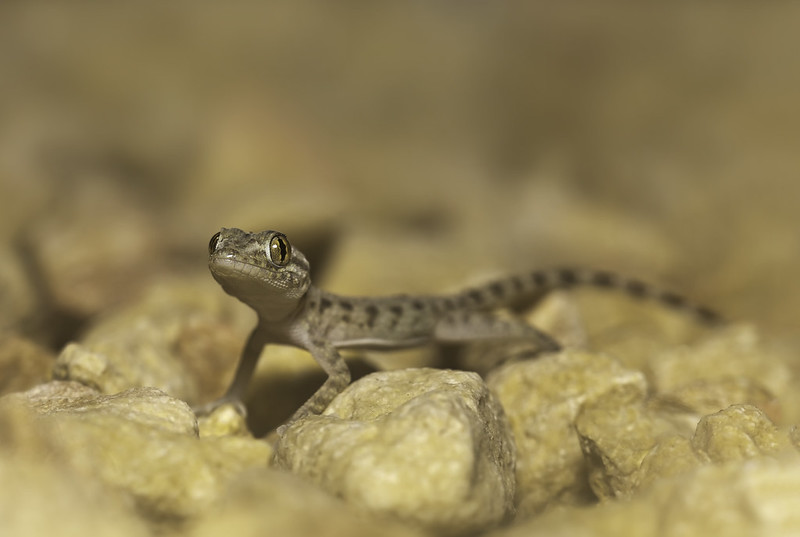
Southern tuberculated gecko (Bunopus tuberculatus) by Kristian Bell, on Flickr
The next day it was off to our first proper destination, Koh Samui in Thailand, where we were to meet up with my 2 brothers, who both live in the country - having fallen for the charms of the local women/boys/ladyboys. The idea was to spend one day shopping for knock off designer t-shirts (my idea of hell but believe it or not this was one of the prime motivations of one of my fellow travelers on the trip), one day visiting my brothers house on Koh Tao and one day to relax. I have spent a bit of time herping on Koh Tao and Koh Samui is more populated and polluted so I wasn't too bothered about going crazy with herping here. Nevertheless I hired a scooter for the day and my girlfriend and I hit the only patches of decent forest I could find in the interior. Within minutes, and right within the densest patch of forest the road passed through, we had come across a snake crossing the road.
These guys are common both on roads and ground into roads so I am posting an old pic taken on Koh Tao a few years ago.
Image may be NSFW.
Clik here to view.
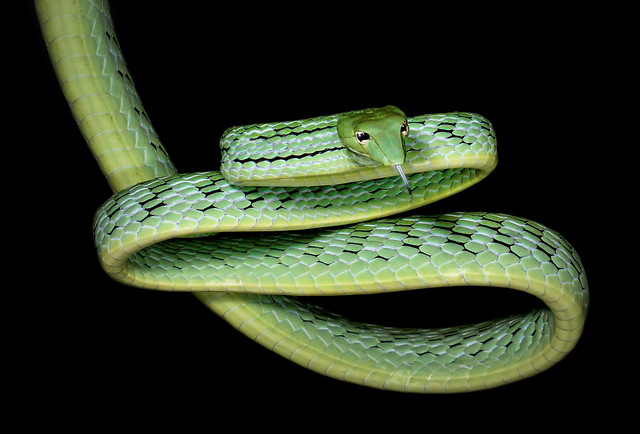
Oriental Whipsnake (Ahaetulla prasina) by Kristian Bell, on Flickr
Despite this early success the rest of the day was extremely slow going and I was dismayed at the lack of decent habitat even well into the interior of the island. By nightfall we hadnt improved on our total, though did manage to find a few amphibians in a small stream.
Not sure of the ID on these guys Image may be NSFW.
Clik here to view.
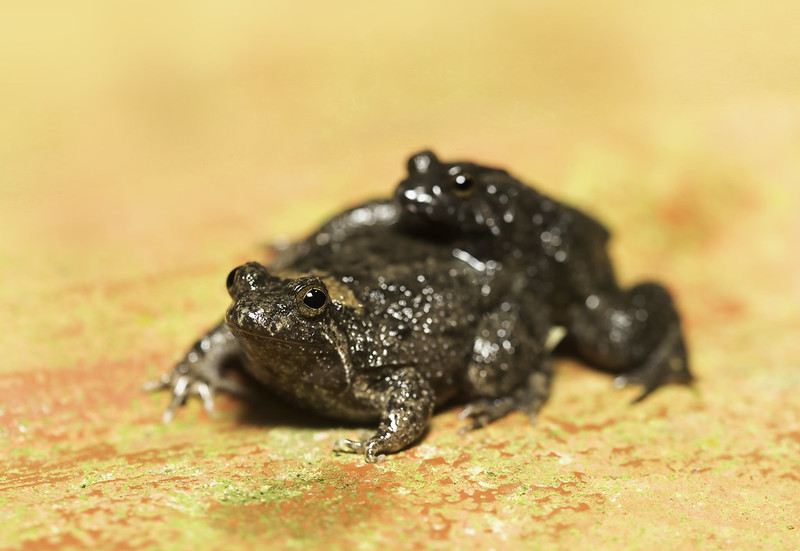
Unknown frogs in amplexus by Kristian Bell, on Flickr
Image may be NSFW.
Clik here to view.

Asian Painted Frog (Kaloula pulchra) by Kristian Bell, on Flickr
Image may be NSFW.
Clik here to view.
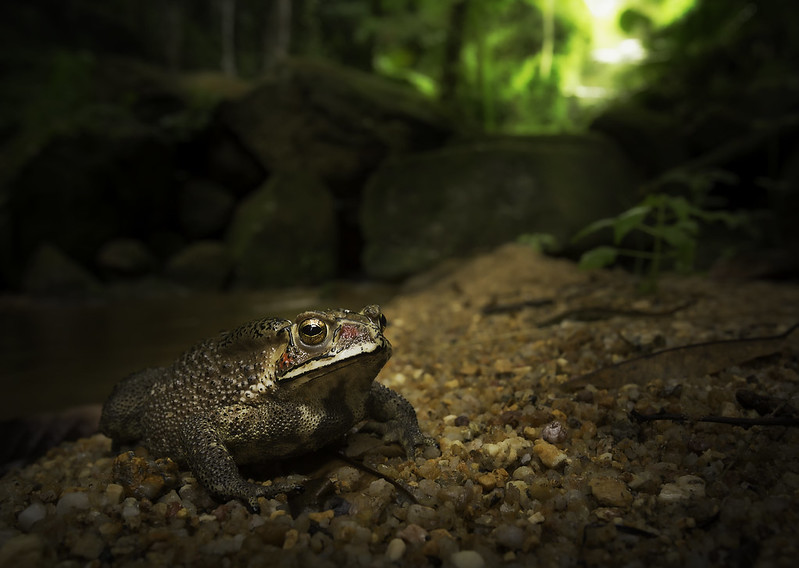
Asian Common Toad (Duttaphrynus melanostictus) by Kristian Bell, on Flickr
As dark descended we road cruised the best looking patch of forest but despite loads of bats flitting across the road we saw no reptiles. Before packing up for the night we returned to walk the small stretch of stream where we had found the frog and toad and came across one snake (a lifer for me) photographed as it sat on a low-lying shrub on the edge of a footpath.
Image may be NSFW.
Clik here to view.

Common Mock Viper (Psammodynastes pulverulentus) by Kristian Bell, on Flickr
The rest of our time on Koh Samui passed quickly and it was off to our next destination, a tiny island approximately 1500km off the coast of Western Australia - Christmas Island. Christmas Island is a pretty remarkable place, famous for its mass migration of red crabs. It has also become a massive 'sorting office' for asylum seekers and we had a quick look at several of the detainee camps that are dotted around the island - separated into families, children and single men (where most of the trouble predictably happens). Some of the accommodation they live in includes demountable cabins previously used for struggling aboriginal settlements on the mainland, but long since deemed uninhabitable due to rot/asbestos and the like. Any Aussie readers will appreciate how shocking these cabins must be to be deemed unsuitable by the government for use as aboriginal housing. The massive influx of asylum seekers has created a crazy local economy where even the most menial jobs attract 6-figure annual salaries and every single room in every guesthouse, hotel and lodging is permanently rented out, at day rates, to government workers who have nowhere else to stay. Christmas Island also has a massive range of birds and most show almsot no fear of humans. At night a bunch of frigates and boobies roosted on the cliff-top fencing just outside our hotel room and didnt budge even when I disturbed them by standing right beside them. Our hotel used to be a thriving 5-star casino resort but a change in government legislation in the 90s put an end to it. The resort rapidly deteriorated but the hotel component was saved from dereliction a few years ago. However, all the gaming rooms remain abandoned, and it was extremely creepy walking through dark rooms filled with rows of pokie machines, roulette and craps tables.
Image may be NSFW.
Clik here to view.

Brown Booby (Sula leucogaster plotus) by Kristian Bell, on Flickr
Image may be NSFW.
Clik here to view.
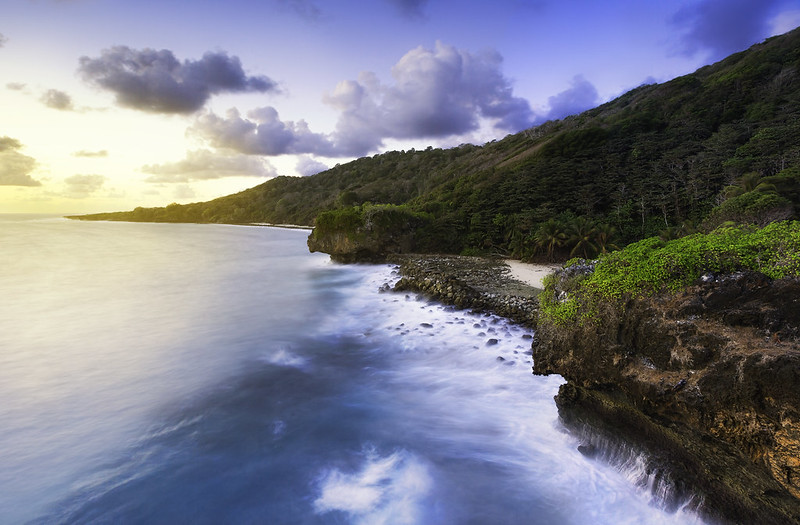
Christmas Island by Kristian Bell, on Flickr
Image may be NSFW.
Clik here to view.

Christmas Island Thrush (Turdus poliocephalus erythropleurus) by Kristian Bell, on Flickr
Image may be NSFW.
Clik here to view.
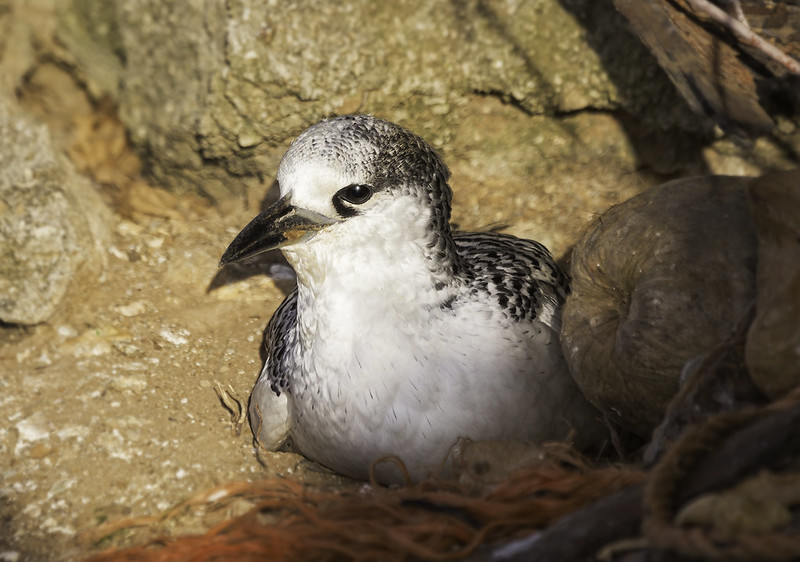
Yellow Tropicbird/Golden Bosun Chick (Phaethon lepturus fulvus) by Kristian Bell, on Flickr
These guys get to monstrous sizes (if you dont believe me CHECK OUT THIS BRUTE: http://www.hoax-slayer.com/images/coconut-crab-2.jpg )
Image may be NSFW.
Clik here to view.
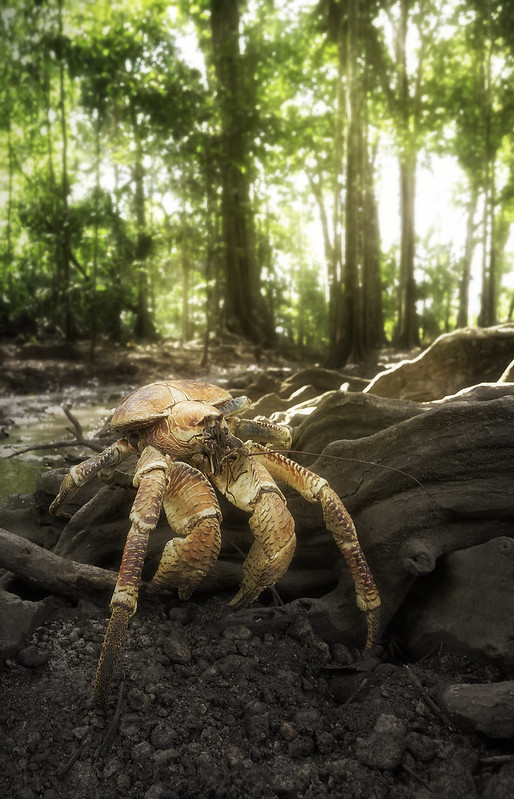
Robber Crab (Birgus latro) by Kristian Bell, on Flickr
Image may be NSFW.
Clik here to view.

Forgotten Casino by Kristian Bell, on Flickr
After one night in Christmas Island we set off the next morning for our main destination of Sydney, to spend time with my sister and her family. I lived in Sydney for 8 months while working as a research assistant at the university of Sydney so it was nice to go back and visit a few old patches as well as try out a couple of new areas. Unfortunately one favourite patch in Sydney where I had seen massive amounts of wildlife had been destroyed to make way for some treatment plant of some sort, which was really sad for me as I had some great memories of the place - cant beat progress though eh! My first mini expedition was to the Blue Mountains. I saw a stack of critters including a blotched bluetongue, Cunninghams skinks, brushtail possum, water dragons and a southern leaftail gecko, though didnt manage my main target of Highlands Copperhead. As I have seen many of each of these species previously, I only took photos of a few...
Image may be NSFW.
Clik here to view.

Mountain Heath Dragon (Rankinia diemensis) by Kristian Bell, on Flickr
Video link to footage of above lizard: Mountain Heath Dragon (Rankinia diemensis) | Flickr - Photo Sharing!
Image may be NSFW.
Clik here to view.
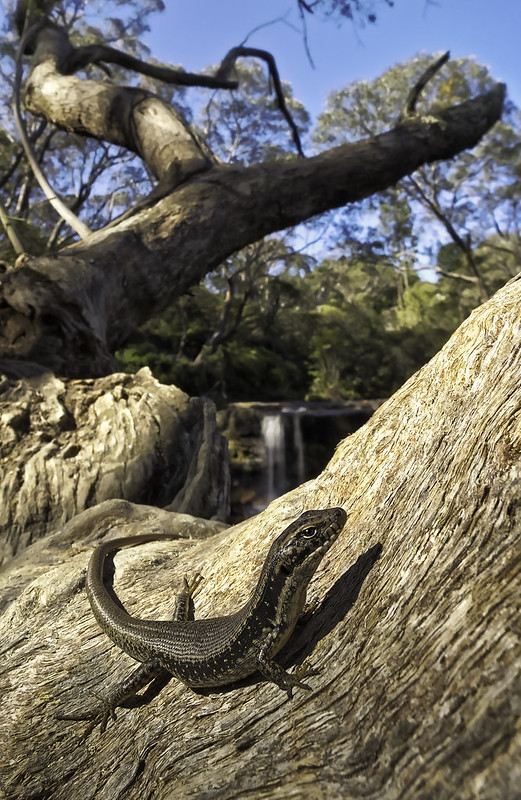
Yellow-Bellied Water Skink (Eulamprus heatwolei) by Kristian Bell, on Flickr
Image may be NSFW.
Clik here to view.

Valley of the Waters by Kristian Bell, on Flickr
Image may be NSFW.
Clik here to view.
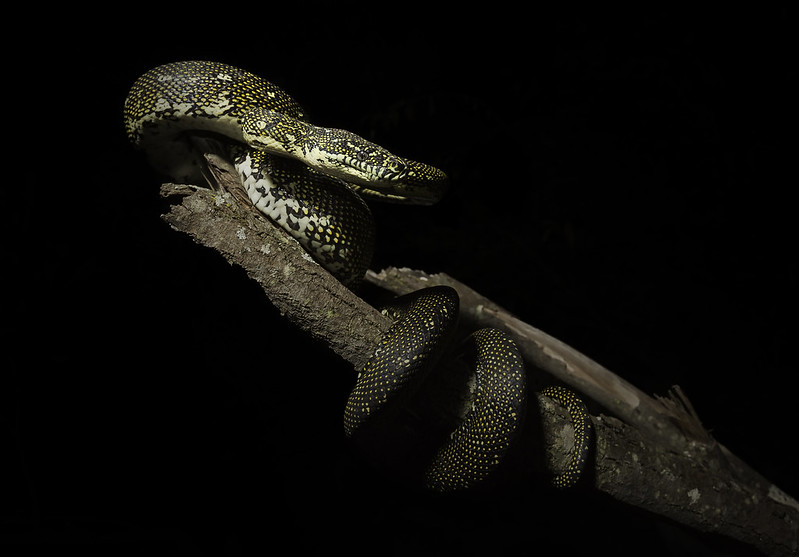
Diamond Python (Morelia spilota) by Kristian Bell, on Flickr
Alot of time in Sydney was spent with my sister and her kids, but as I had to share a hotel room with my brother (who is a big snorer) I (a very light sleeper) had plenty of time to take shots of Coogee Bay, where we were staying. Click on the picture below for a slightly funnier story about how the photograph came about.
Image may be NSFW.
Clik here to view.
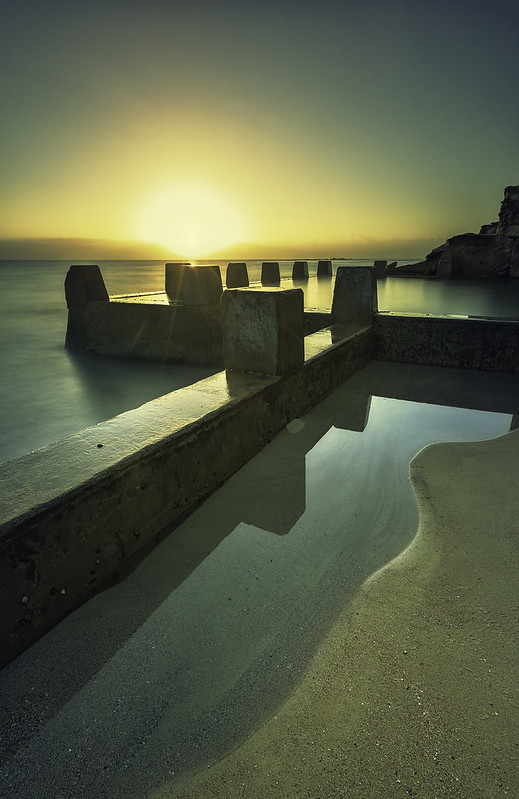
Coogee Dawn by Kristian Bell, on Flickr
My final excursion while in Sydney was to Newcastle and the areas to the north. I was keen to take a half decent photograph of a red-bellied black snake as this was the first Aussie snake I ever saw (about 12 years ago) and despite seeing quite a few since I have never got any better pictures than a tail disappearing into undergrowth or a blurred headshot. Jordan Mulder, Stephen Mahoney and Daniel Stace were my very able guides for the day and we very quickly found about a dozen red-bellies and a dozen marsh snakes.
Image may be NSFW.
Clik here to view.
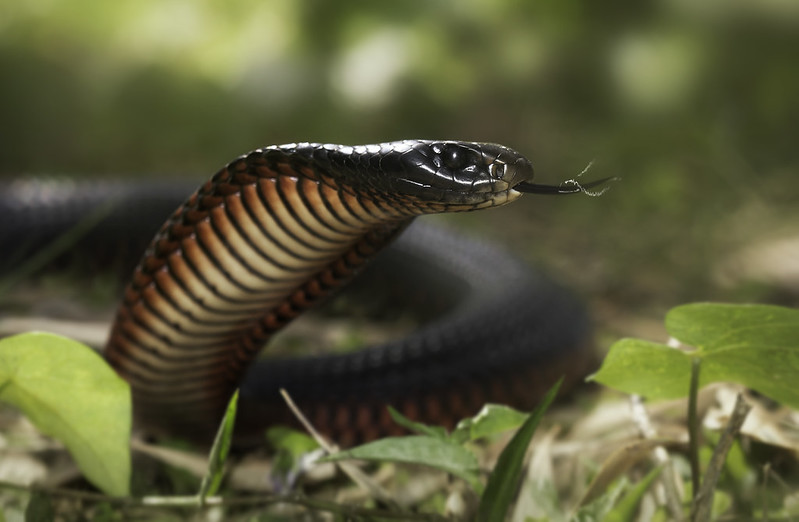
Red-bellied Black Snake (Pseudechis porphyriacus) by Kristian Bell, on Flickr
Image may be NSFW.
Clik here to view.

Red-bellied Black Snake (Pseudechis porphyriacus) by Kristian Bell, on Flickr
After a successful afternoon we headed north of Newcastle to do a spot of nightcruising. It was extremely windy and stormy and at one point we needed to pull a freshly fallen tree off the road in order to exit the park but before we got hit by torrential rain and called it a night we managed to find one snake - a new species for me - and one very cool marsupial.
Image may be NSFW.
Clik here to view.
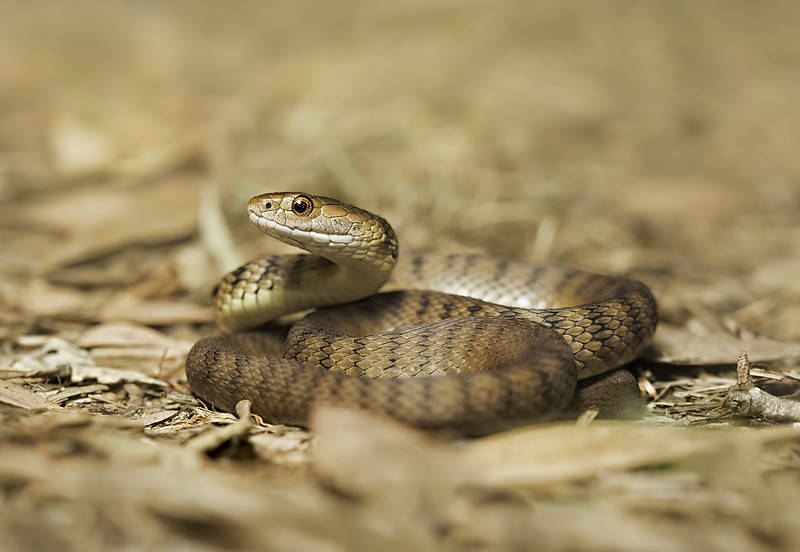
Rough-scaled Snake (Tropidechis carinatus) by Kristian Bell, on Flickr
Image may be NSFW.
Clik here to view.

Feathertail Glider (Acrobates pygmaeus) by Kristian Bell, on Flickr
Our next destination was a 1 night stop in Bali. Some of the guys we were travelling with used to visit Bali every year for many years but hadnt been for a decade or so. They were keen to re-visit to see if the island was still as good as they remembered it - unfortunately it wasnt. The place was a bit of a mess, with rubbish everywhere, a chaotic airport and congested roads. After being on the go non-stop for over a week I decided there was no point trying to hire a scooter for an afternoon so I gave myself the night off from herping.
Image may be NSFW.
Clik here to view.
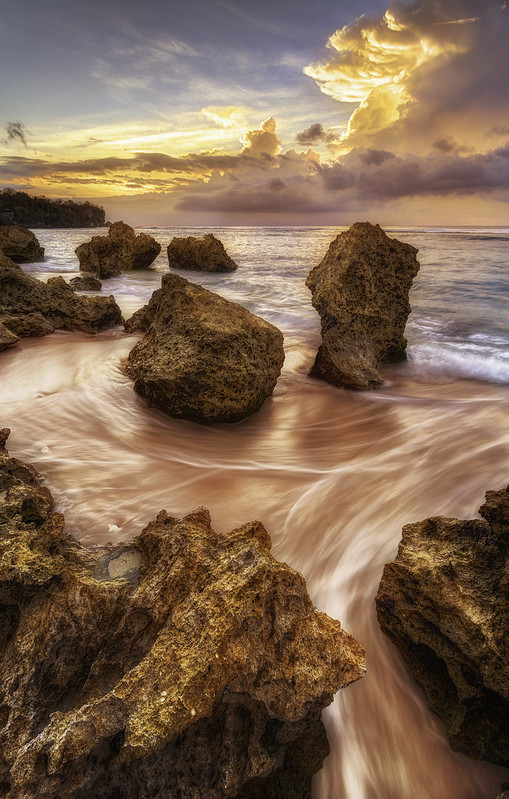
Bali by Kristian Bell, on Flickr
One other reason for taking the night off was that I was keen to be as rested as possible for our last destination, and the one I was by far looking forward to the most - the island of Langkawi in Malaysia. We stayed at an amazing hotel for 3 nights, though I learned fairly quickly that the hotel was only a few years old and had been delicately put on top of what used to be some lovely rainforest and mangrove habitat. This seemed to be a common story across much of Langkawi, with new developments and forest clearing occurring everywhere. Despite this, the island still has plenty of decent tracts of forest left, and compared to Bali seemed like paradise, with monkeys, birds and water monitors absolutely everywhere we turned to look. My girlfriend (now my fiance by this point in the trip!) and I quickly sorted a hire car and were soon speeding around the island, taking in the sights. The first rains of the season came with a whimper on our first night there, but by the second night we were absolutely deluged. Despite torrential rain (and I have never had much success herping in rain other than occasional Nerodia-filled nights in Florida) we saw a decent number of snakes, including 7 Pope's pit vipers, a green cat snake and Malayan Krait. During the day we took a boat tour in the mangroves and our eagle-eyed guide spotted 3 mangrove pit vipers. My [strike]girlfriend[/strike] sorry fiance, also spotted a cerburus sp. which i hooked out the water and placed on the boat. Having handled a few filesnakes in Australia I was expecting a loose sack of a snake with pretty limited ability to move about on land. Unfortunately I was wrong, and within a split second the snake jumped several times and bounded out the boat, disappearing into the murky water.
These guys were fairly shyImage may be NSFW.
Clik here to view.
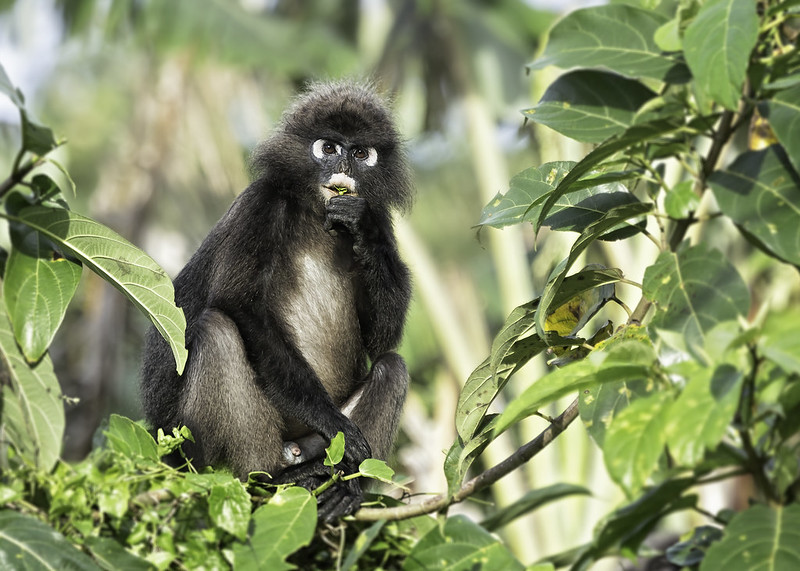
Dusky Leaf Monkey (Trachypithecus obscurus) by Kristian Bell, on Flickr
This species was newly described in about 2008 Image may be NSFW.
Clik here to view.

Bent-toed Gecko (Cyrtodactylus macrotuberculatus) by Kristian Bell, on Flickr
Image may be NSFW.
Clik here to view.

Popes Pit Viper (Trimeresurus popeorum) by Kristian Bell, on Flickr
These guys were everywhere across the island and on several occasions we saw what I presume was a parent monkey sat at the side of the road beside a roadkill juvenile monkey Image may be NSFW.
Clik here to view.
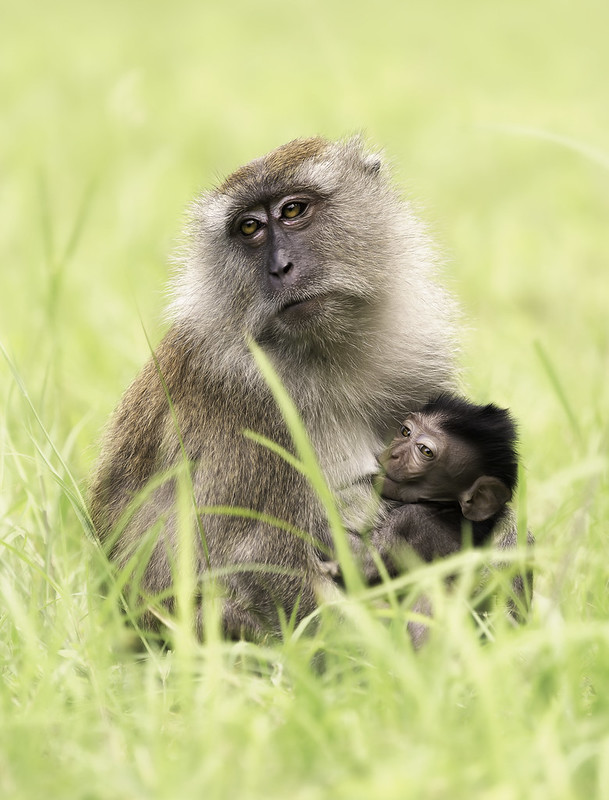
Long-tailed Macaque (Macaca fascicularis) mother and baby by Kristian Bell, on Flickr
I was blown away by how attractive these snakes were. For some reason photos of these guys dont do the iridescence and colour of them justice Image may be NSFW.
Clik here to view.
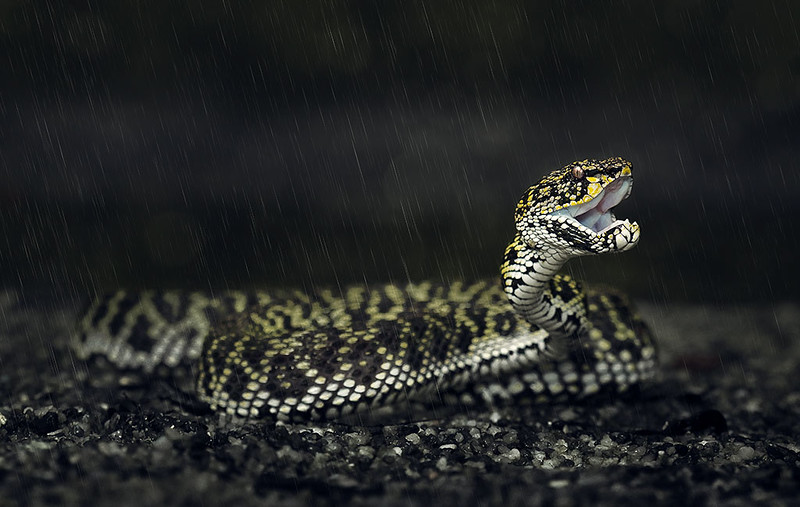
Mangrove Pit Viper (Trimeresurus purpureomaculatus) by Kristian Bell, on Flickr
Despite possibly being the most venomous snake in Asia this guy was just about the most innocuous snake i've encountered.
Image may be NSFW.
Clik here to view.
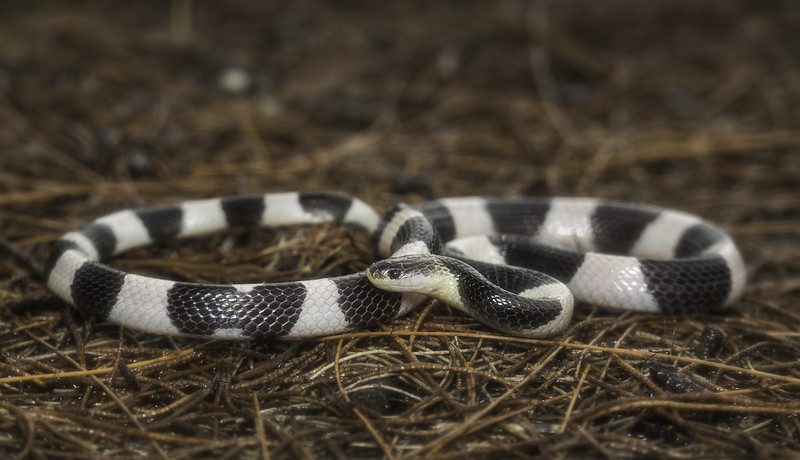
Juvenile Malayan Krait (Bungarus candidus) by Kristian Bell, on Flickr
....unlike this guy
Image may be NSFW.
Clik here to view.
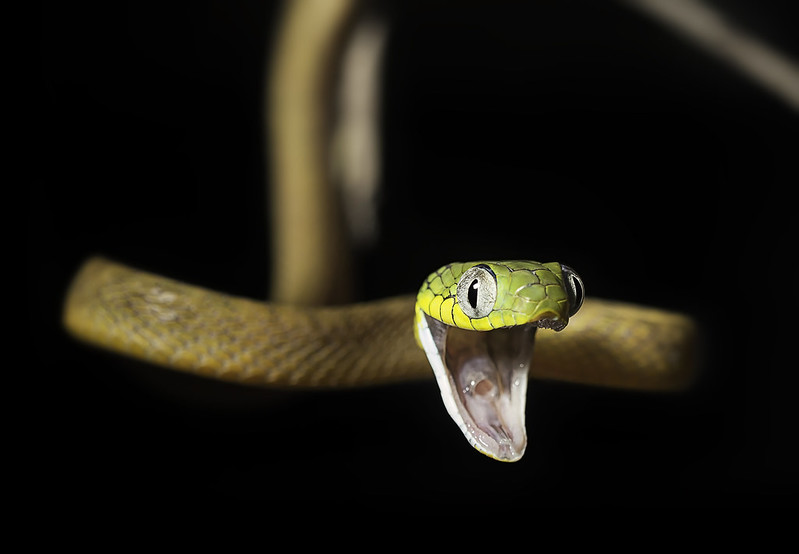
Green Cat Snake (Boiga cyanea) by Kristian Bell, on Flickr
Image may be NSFW.
Clik here to view.

Black Sand Beach Jetty by Kristian Bell, on Flickr
And that just about wraps up an action-packed 2 weeks and my last herping until sometime in 2014, when I am planning a herping honeymoon in Costa Rica (though I have yet to tell this to my long-suffering partner).
Many thanks to Tom Charlton, Tom Williams, David Nixon, Rupert Lewis, Jordan Mulder, Stephen Mahoney, Daniel Stace and anyone else I may have forgotten that took me out or gave me invaluable advice about where to look for certain critters. The trip was a great success, in no small part due to your willingness to share your knowledge. I owe you all.
↧
↧
Herp pics (warning - pic rich!)
So this thread is composed of a bunch of reptile pics I've taken since back in October, through to now over a couple different trips.
First off was a short night up around Newcastle with a couple of friends.
This Rough-scale was one of the few snakes out on the road.
Image may be NSFW.
Clik here to view.![]()
Tropidechis carinatus by Stephen Mahony, on Flickr
Image may be NSFW.
Clik here to view.![]()
Tropidechis carinatus by Stephen Mahony, on Flickr
Image may be NSFW.
Clik here to view.![]()
Tropidechis carinatus by Stephen Mahony, on Flickr
Image may be NSFW.
Clik here to view.![]()
Tropidechis carinatus by Stephen Mahony, on Flickr
Image may be NSFW.
Clik here to view.![]()
Tropidechis carinatus by Stephen Mahony, on Flickr
Image may be NSFW.
Clik here to view.![]()
Tropidechis carinatus by Stephen Mahony, on Flickr
Image may be NSFW.
Clik here to view.![]()
Tropidechis carinatus by Stephen Mahony, on Flickr
We also photographed a Red-belly in the day, but I got few decent shots.
Image may be NSFW.
Clik here to view.![]()
Pseudechis porphyriacus by Stephen Mahony, on Flickr
I also took a few pictures of flowers
Image may be NSFW.
Clik here to view.![]()
Actinotus helianthi by Stephen Mahony, on Flickr
Image may be NSFW.
Clik here to view.![]()
Viola hederacea by Stephen Mahony, on Flickr
We found a very small, yet attractive and uncommon frog.
Image may be NSFW.
Clik here to view.![]()
Crinia tinnula by Stephen Mahony, on Flickr
And a really cute Feather-tailed Glider.
Image may be NSFW.
Clik here to view.![]()
Acrobates pygmaeus by Stephen Mahony, on Flickr
I then took a couple pictures at home
Rocket Frogs
Image may be NSFW.
Clik here to view.![]()
Litoria latopalmata by Stephen Mahony, on Flickr
Image may be NSFW.
Clik here to view.![]()
Litoria latopalmata by Stephen Mahony, on Flickr
Water Dragon
Image may be NSFW.
Clik here to view.![]()
Intellegama lesueurii by Stephen Mahony, on Flickr
Before a short trip to the Barringtons yielded some nice skinks
Montane Garden Skink
Image may be NSFW.
Clik here to view.![]()
Lampropholis caligula by Stephen Mahony, on Flickr
Image may be NSFW.
Clik here to view.![]()
Lampropholis caligula by Stephen Mahony, on Flickr
Image may be NSFW.
Clik here to view.![]()
Lampropholis caligula by Stephen Mahony, on Flickr
Image may be NSFW.
Clik here to view.![]()
Lampropholis caligula by Stephen Mahony, on Flickr
Weasel Skink
Image may be NSFW.
Clik here to view.![]()
Saproscincus mustelinus by Stephen Mahony, on Flickr
And a nice Southern Angle Headed Dragon
Image may be NSFW.
Clik here to view.![]()
Hypsilurus spinipes by Stephen Mahony, on Flickr
Image may be NSFW.
Clik here to view.![]()
Hypsilurus spinipes by Stephen Mahony, on Flickr
Image may be NSFW.
Clik here to view.![]()
Hypsilurus spinipes by Stephen Mahony, on Flickr
I took some more photos at home, this time of a Yellow-faced Whip Snake
Image may be NSFW.
Clik here to view.![]()
Demansia psammophis by Stephen Mahony, on Flickr
Image may be NSFW.
Clik here to view.![]()
Demansia psammophis by Stephen Mahony, on Flickr
Before I joined up with a bunch of other herpers on the AHS field trip to Smith's Lakes, where we saw and I took photos of numerous animals.
Golden Crowned Snake
Image may be NSFW.
Clik here to view.![]()
Cacophis squamulosus by Stephen Mahony, on Flickr
Image may be NSFW.
Clik here to view.![]()
Cacophis squamulosus by Stephen Mahony, on Flickr
Image may be NSFW.
Clik here to view.![]()
Cacophis squamulosus by Stephen Mahony, on Flickr
Eastern Small Eyed Snake
Image may be NSFW.
Clik here to view.![]()
Cryptophis nigrescens by Stephen Mahony, on Flickr
Rough Scaled Snake
Image may be NSFW.
Clik here to view.![]()
Tropidechis carinatus by Stephen Mahony, on Flickr
Image may be NSFW.
Clik here to view.![]()
Tropidechis carinatus by Stephen Mahony, on Flickr
Image may be NSFW.
Clik here to view.![]()
Tropidechis carinatus by Stephen Mahony, on Flickr
A Revealed Tree Frog
Image may be NSFW.
Clik here to view.![]()
Litoria revelata by Stephen Mahony, on Flickr
Image may be NSFW.
Clik here to view.![]()
Litoria revelata by Stephen Mahony, on Flickr
And Tyler's Tree Frog
Image may be NSFW.
Clik here to view.![]()
Litoria tyleri by Stephen Mahony, on Flickr
Red Backed Toadlets
Image may be NSFW.
Clik here to view.![]()
Pseudophryne coriacea by Stephen Mahony, on Flickr
Image may be NSFW.
Clik here to view.![]()
Pseudophryne coriacea by Stephen Mahony, on Flickr
A Common Scaly Foot
Image may be NSFW.
Clik here to view.![]()
Pygopus lepidopodus by Stephen Mahony, on Flickr
Image may be NSFW.
Clik here to view.![]()
Pygopus lepidopodus by Stephen Mahony, on Flickr
Moritz' Leaf-tailed Gecko
Image may be NSFW.
Clik here to view.![]()
Saltuarius moritzi by Stephen Mahony, on Flickr
Image may be NSFW.
Clik here to view.![]()
Saltuarius moritzi by Stephen Mahony, on Flickr
Some Lycosid spider.
Image may be NSFW.
Clik here to view.![]()
Spider by Stephen Mahony, on Flickr
I then had a few days photographing around where I live, doing a couple nights up the mountains for frogs.
Great-barred Frog
Image may be NSFW.
Clik here to view.![]()
Mixophyes fasciolatus by Stephen Mahony, on Flickr
Giant-barred Frog
Image may be NSFW.
Clik here to view.![]()
Mixophyes iteratus by Stephen Mahony, on Flickr
Image may be NSFW.
Clik here to view.![]()
Mixophyes iteratus by Stephen Mahony, on Flickr
Image may be NSFW.
Clik here to view.![]()
Mixophyes iteratus by Stephen Mahony, on Flickr
Black-soled Frog
Image may be NSFW.
Clik here to view.![]()
Frog Skin by Stephen Mahony, on Flickr
Image may be NSFW.
Clik here to view.![]()
Frog Eye by Stephen Mahony, on Flickr
And another Small-eyed Snake
Image may be NSFW.
Clik here to view.![]()
Cryptophis nigrescens by Stephen Mahony, on Flickr
Image may be NSFW.
Clik here to view.![]()
Cryptophis nigrescens by Stephen Mahony, on Flickr
Image may be NSFW.
Clik here to view.![]()
Cryptophis nigrescens by Stephen Mahony, on Flickr
Image may be NSFW.
Clik here to view.![]()
Cryptophis nigrescens by Stephen Mahony, on Flickr
A short trip North allowed me a couple pictures of some cool frogs.
Sphagnum Frog
Image may be NSFW.
Clik here to view.![]()
Philoria sphagnicola by Stephen Mahony, on Flickr
Image may be NSFW.
Clik here to view.![]()
Philoria sphagnicola by Stephen Mahony, on Flickr
Image may be NSFW.
Clik here to view.![]()
Philoria sphagnicola by Stephen Mahony, on Flickr
Pugh's Mountain Frog
Image may be NSFW.
Clik here to view.![]()
Philoria pughi by Stephen Mahony, on Flickr
After all this herping around the NSW coast, I was very ready for some desert air. Luckily I managed to get on a trip with Sydney Uni out to the Simpson Desert in western Qld. I'd visited the area once before and knew it to be pretty spectacular, this was not at all dulled on this trip.
Of course my primary aim, as always was geckos. I particularly wanted pictures of the Smooth Knob-tails.
While we did see a number of these I was often too busy to get pictures and didn't really get the ones I wanted.
Image may be NSFW.
Clik here to view.![]()
Nephrurus levis by Stephen Mahony, on Flickr
Image may be NSFW.
Clik here to view.![]()
Nephrurus levis by Stephen Mahony, on Flickr
Image may be NSFW.
Clik here to view.![]()
Nephrurus levis by Stephen Mahony, on Flickr
Image may be NSFW.
Clik here to view.![]()
Nephrurus levis by Stephen Mahony, on Flickr
Image may be NSFW.
Clik here to view.![]()
Nephrurus levis by Stephen Mahony, on Flickr
I also took some photo of the Sand-plain Gecko
Image may be NSFW.
Clik here to view.![]()
Lucasium stenodactylum by Stephen Mahony, on Flickr
Image may be NSFW.
Clik here to view.![]()
Lucasium stenodactylum by Stephen Mahony, on Flickr
Image may be NSFW.
Clik here to view.![]()
Lucasium stenodactylum by Stephen Mahony, on Flickr
Image may be NSFW.
Clik here to view.![]()
Lucasium stenodactylum by Stephen Mahony, on Flickr
Image may be NSFW.
Clik here to view.![]()
Lucasium stenodactylum by Stephen Mahony, on Flickr
Image may be NSFW.
Clik here to view.![]()
Lucasium stenodactylum by Stephen Mahony, on Flickr
And some of the features of a Fat-tailed Gecko
Image may be NSFW.
Clik here to view.![]()
Diplodactylus conspicillatus by Stephen Mahony, on Flickr
Image may be NSFW.
Clik here to view.![]()
Diplodactylus conspicillatus by Stephen Mahony, on Flickr
Image may be NSFW.
Clik here to view.![]()
Diplodactylus conspicillatus by Stephen Mahony, on Flickr
Dragons Lizards were extremely abundant in the day, with several species being seen around.
My favourites are the rather speccy Thorny Devils. We only saw one somewhat dull individual this trip, but it was a nice animal none-the-less.
Image may be NSFW.
Clik here to view.![]()
Moloch horridus by Stephen Mahony, on Flickr
Image may be NSFW.
Clik here to view.![]()
Moloch horridus by Stephen Mahony, on Flickr
Central Netteds were aplenty with many juveniles of the species seen running into burrows around the place, or basking on low wood and shrubs.
Image may be NSFW.
Clik here to view.![]()
Ctenophorus nuchalis by Stephen Mahony, on Flickr
Image may be NSFW.
Clik here to view.![]()
Ctenophorus nuchalis by Stephen Mahony, on Flickr
Image may be NSFW.
Clik here to view.![]()
Ctenophorus nuchalis by Stephen Mahony, on Flickr
I had seen Millitary Dragons before, and found them very nice, but this was the first time seeing the males in their spectacular breeding colours.
Image may be NSFW.
Clik here to view.![]()
Ctenophorus isolepis by Stephen Mahony, on Flickr
Image may be NSFW.
Clik here to view.![]()
Ctenophorus isolepis by Stephen Mahony, on Flickr
A pair of Long-nosed Dragons hung around the camp area often seen sitting up in the trees, jumping from branch to branch.
Image may be NSFW.
Clik here to view.![]()
Amphibolurus longirostris by Stephen Mahony, on Flickr
Some of the dune tops yielded these Cane-grass Dragons, this individual is the first one I've seen actually sitting on Cane Grass, though I'm sure it's not actually uncommon.
Image may be NSFW.
Clik here to view.![]()
Diporiphora winneckei by Stephen Mahony, on Flickr
The hot conditions were also pretty good for skinks which were seen often foraging in the morning and afternoon or taking shelter at the edge of spinifex during the day. We saw plenty of species, though I photographed only a few.
Red-tailed Fine-snout Ctenotus have long slender tails and toes. They're quite pretty skinks.
Image may be NSFW.
Clik here to view.![]()
Ctenotus leae by Stephen Mahony, on Flickr
Ctenotus dux were one of the more common species.
Image may be NSFW.
Clik here to view.![]()
Ctenotus dux by Stephen Mahony, on Flickr
Image may be NSFW.
Clik here to view.![]()
Ctenotus dux by Stephen Mahony, on Flickr
As were Ctenotus ariadne.
Image may be NSFW.
Clik here to view.![]()
Ctenotus ariadne by Stephen Mahony, on Flickr
There were also plenty of Sand-sliders, namely Lerista labialis.
Image may be NSFW.
Clik here to view.![]()
Lerista labialis by Stephen Mahony, on Flickr
As well as a single individual of Lerista aericeps.
Image may be NSFW.
Clik here to view.![]()
Lerista aericeps by Stephen Mahony, on Flickr
We saw a few snakes, including a large Mulga which I didn't photograph and some nice burrowing species.
Most people dislike Blind Snakes, I kinda like them, though I agree they are a pain to photograph.
Image may be NSFW.
Clik here to view.![]()
Ramphotyphlops endoterus by Stephen Mahony, on Flickr
Image may be NSFW.
Clik here to view.![]()
Ramphotyphlops endoterus by Stephen Mahony, on Flickr
On the other hand this Narrow Banded Shovel-nosed Snake was exciting for the whole team, as they rarely turn up in the area, and are extremely attractive.
Image may be NSFW.
Clik here to view.![]()
Brachyurophis fasciolatus by Stephen Mahony, on Flickr
Image may be NSFW.
Clik here to view.![]()
Brachyurophis fasciolatus by Stephen Mahony, on Flickr
Image may be NSFW.
Clik here to view.![]()
Brachyurophis fasciolatus by Stephen Mahony, on Flickr
Image may be NSFW.
Clik here to view.![]()
Brachyurophis fasciolatus by Stephen Mahony, on Flickr
Image may be NSFW.
Clik here to view.![]()
Brachyurophis fasciolatus by Stephen Mahony, on Flickr
Along with these, another Snake-like animal was picked up. This time, a Legless Lizard.
Image may be NSFW.
Clik here to view.![]()
Delma nasuta by Stephen Mahony, on Flickr
Last but certainly not least were the Goannas we were lucky enough to track down.
Gould's Monitors were certainly the easiest of these to find, walking through our camp, digging around the ground in it and letting me get pretty close for some pics.
Image may be NSFW.
Clik here to view.![]()
Varanus gouldii by Stephen Mahony, on Flickr
Image may be NSFW.
Clik here to view.![]()
Varanus gouldii by Stephen Mahony, on Flickr
Image may be NSFW.
Clik here to view.![]()
Varanus gouldii by Stephen Mahony, on Flickr
We also saw a number of Pygmy Mulga Monitors, a delightful small, quite beautiful species.
Image may be NSFW.
Clik here to view.![]()
Varanus gilleni by Stephen Mahony, on Flickr
Image may be NSFW.
Clik here to view.![]()
Varanus gilleni by Stephen Mahony, on Flickr
Image may be NSFW.
Clik here to view.![]()
Varanus gilleni by Stephen Mahony, on Flickr
Image may be NSFW.
Clik here to view.![]()
Varanus gilleni by Stephen Mahony, on Flickr
Image may be NSFW.
Clik here to view.![]() Varanus gilleni by Stephen Mahony, on Flickr
Varanus gilleni by Stephen Mahony, on Flickr
Image may be NSFW.
Clik here to view.![]()
Varanus gilleni by Stephen Mahony, on Flickr
However my favourite find of the trip was this Short-tailed Monitor. This is the smallest species of Goanna in the world. On top of this it's quite attractive, displaying some nice red colour to match the sand of its surrounding.
Image may be NSFW.
Clik here to view.![]()
Varanus brevicauda by Stephen Mahony, on Flickr
Image may be NSFW.
Clik here to view.![]()
Varanus brevicauda by Stephen Mahony, on Flickr
Image may be NSFW.
Clik here to view.![]()
Varanus brevicauda by Stephen Mahony, on Flickr
Image may be NSFW.
Clik here to view.![]()
Varanus brevicauda by Stephen Mahony, on Flickr
Image may be NSFW.
Clik here to view.![]()
Varanus brevicauda by Stephen Mahony, on Flickr
Image may be NSFW.
Clik here to view.![]()
Varanus brevicauda by Stephen Mahony, on Flickr
Image may be NSFW.
Clik here to view.![]()
Varanus brevicauda by Stephen Mahony, on Flickr
Unfortunately even the best trips come to an end. We soon found ourself driving out of the Desert, bid fairlwell by a pretty sunset over the Southern Cross in the town of Windorah.
Image may be NSFW.
Clik here to view.![]()
Sunset on the Southern Cross by Stephen Mahony, on Flickr
Hope you guys enjoy the thread!
First off was a short night up around Newcastle with a couple of friends.
This Rough-scale was one of the few snakes out on the road.
Image may be NSFW.
Clik here to view.

Tropidechis carinatus by Stephen Mahony, on Flickr
Image may be NSFW.
Clik here to view.

Tropidechis carinatus by Stephen Mahony, on Flickr
Image may be NSFW.
Clik here to view.

Tropidechis carinatus by Stephen Mahony, on Flickr
Image may be NSFW.
Clik here to view.

Tropidechis carinatus by Stephen Mahony, on Flickr
Image may be NSFW.
Clik here to view.

Tropidechis carinatus by Stephen Mahony, on Flickr
Image may be NSFW.
Clik here to view.

Tropidechis carinatus by Stephen Mahony, on Flickr
Image may be NSFW.
Clik here to view.

Tropidechis carinatus by Stephen Mahony, on Flickr
We also photographed a Red-belly in the day, but I got few decent shots.
Image may be NSFW.
Clik here to view.

Pseudechis porphyriacus by Stephen Mahony, on Flickr
I also took a few pictures of flowers
Image may be NSFW.
Clik here to view.

Actinotus helianthi by Stephen Mahony, on Flickr
Image may be NSFW.
Clik here to view.

Viola hederacea by Stephen Mahony, on Flickr
We found a very small, yet attractive and uncommon frog.
Image may be NSFW.
Clik here to view.

Crinia tinnula by Stephen Mahony, on Flickr
And a really cute Feather-tailed Glider.
Image may be NSFW.
Clik here to view.

Acrobates pygmaeus by Stephen Mahony, on Flickr
I then took a couple pictures at home
Rocket Frogs
Image may be NSFW.
Clik here to view.

Litoria latopalmata by Stephen Mahony, on Flickr
Image may be NSFW.
Clik here to view.

Litoria latopalmata by Stephen Mahony, on Flickr
Water Dragon
Image may be NSFW.
Clik here to view.

Intellegama lesueurii by Stephen Mahony, on Flickr
Before a short trip to the Barringtons yielded some nice skinks
Montane Garden Skink
Image may be NSFW.
Clik here to view.

Lampropholis caligula by Stephen Mahony, on Flickr
Image may be NSFW.
Clik here to view.

Lampropholis caligula by Stephen Mahony, on Flickr
Image may be NSFW.
Clik here to view.

Lampropholis caligula by Stephen Mahony, on Flickr
Image may be NSFW.
Clik here to view.

Lampropholis caligula by Stephen Mahony, on Flickr
Weasel Skink
Image may be NSFW.
Clik here to view.

Saproscincus mustelinus by Stephen Mahony, on Flickr
And a nice Southern Angle Headed Dragon
Image may be NSFW.
Clik here to view.

Hypsilurus spinipes by Stephen Mahony, on Flickr
Image may be NSFW.
Clik here to view.

Hypsilurus spinipes by Stephen Mahony, on Flickr
Image may be NSFW.
Clik here to view.

Hypsilurus spinipes by Stephen Mahony, on Flickr
I took some more photos at home, this time of a Yellow-faced Whip Snake
Image may be NSFW.
Clik here to view.

Demansia psammophis by Stephen Mahony, on Flickr
Image may be NSFW.
Clik here to view.

Demansia psammophis by Stephen Mahony, on Flickr
Before I joined up with a bunch of other herpers on the AHS field trip to Smith's Lakes, where we saw and I took photos of numerous animals.
Golden Crowned Snake
Image may be NSFW.
Clik here to view.

Cacophis squamulosus by Stephen Mahony, on Flickr
Image may be NSFW.
Clik here to view.

Cacophis squamulosus by Stephen Mahony, on Flickr
Image may be NSFW.
Clik here to view.

Cacophis squamulosus by Stephen Mahony, on Flickr
Eastern Small Eyed Snake
Image may be NSFW.
Clik here to view.

Cryptophis nigrescens by Stephen Mahony, on Flickr
Rough Scaled Snake
Image may be NSFW.
Clik here to view.

Tropidechis carinatus by Stephen Mahony, on Flickr
Image may be NSFW.
Clik here to view.

Tropidechis carinatus by Stephen Mahony, on Flickr
Image may be NSFW.
Clik here to view.

Tropidechis carinatus by Stephen Mahony, on Flickr
A Revealed Tree Frog
Image may be NSFW.
Clik here to view.

Litoria revelata by Stephen Mahony, on Flickr
Image may be NSFW.
Clik here to view.

Litoria revelata by Stephen Mahony, on Flickr
And Tyler's Tree Frog
Image may be NSFW.
Clik here to view.

Litoria tyleri by Stephen Mahony, on Flickr
Red Backed Toadlets
Image may be NSFW.
Clik here to view.

Pseudophryne coriacea by Stephen Mahony, on Flickr
Image may be NSFW.
Clik here to view.

Pseudophryne coriacea by Stephen Mahony, on Flickr
A Common Scaly Foot
Image may be NSFW.
Clik here to view.

Pygopus lepidopodus by Stephen Mahony, on Flickr
Image may be NSFW.
Clik here to view.

Pygopus lepidopodus by Stephen Mahony, on Flickr
Moritz' Leaf-tailed Gecko
Image may be NSFW.
Clik here to view.

Saltuarius moritzi by Stephen Mahony, on Flickr
Image may be NSFW.
Clik here to view.

Saltuarius moritzi by Stephen Mahony, on Flickr
Some Lycosid spider.
Image may be NSFW.
Clik here to view.

Spider by Stephen Mahony, on Flickr
I then had a few days photographing around where I live, doing a couple nights up the mountains for frogs.
Great-barred Frog
Image may be NSFW.
Clik here to view.

Mixophyes fasciolatus by Stephen Mahony, on Flickr
Giant-barred Frog
Image may be NSFW.
Clik here to view.

Mixophyes iteratus by Stephen Mahony, on Flickr
Image may be NSFW.
Clik here to view.

Mixophyes iteratus by Stephen Mahony, on Flickr
Image may be NSFW.
Clik here to view.

Mixophyes iteratus by Stephen Mahony, on Flickr
Black-soled Frog
Image may be NSFW.
Clik here to view.

Frog Skin by Stephen Mahony, on Flickr
Image may be NSFW.
Clik here to view.

Frog Eye by Stephen Mahony, on Flickr
And another Small-eyed Snake
Image may be NSFW.
Clik here to view.

Cryptophis nigrescens by Stephen Mahony, on Flickr
Image may be NSFW.
Clik here to view.

Cryptophis nigrescens by Stephen Mahony, on Flickr
Image may be NSFW.
Clik here to view.

Cryptophis nigrescens by Stephen Mahony, on Flickr
Image may be NSFW.
Clik here to view.

Cryptophis nigrescens by Stephen Mahony, on Flickr
A short trip North allowed me a couple pictures of some cool frogs.
Sphagnum Frog
Image may be NSFW.
Clik here to view.

Philoria sphagnicola by Stephen Mahony, on Flickr
Image may be NSFW.
Clik here to view.

Philoria sphagnicola by Stephen Mahony, on Flickr
Image may be NSFW.
Clik here to view.

Philoria sphagnicola by Stephen Mahony, on Flickr
Pugh's Mountain Frog
Image may be NSFW.
Clik here to view.

Philoria pughi by Stephen Mahony, on Flickr
After all this herping around the NSW coast, I was very ready for some desert air. Luckily I managed to get on a trip with Sydney Uni out to the Simpson Desert in western Qld. I'd visited the area once before and knew it to be pretty spectacular, this was not at all dulled on this trip.
Of course my primary aim, as always was geckos. I particularly wanted pictures of the Smooth Knob-tails.
While we did see a number of these I was often too busy to get pictures and didn't really get the ones I wanted.
Image may be NSFW.
Clik here to view.

Nephrurus levis by Stephen Mahony, on Flickr
Image may be NSFW.
Clik here to view.

Nephrurus levis by Stephen Mahony, on Flickr
Image may be NSFW.
Clik here to view.

Nephrurus levis by Stephen Mahony, on Flickr
Image may be NSFW.
Clik here to view.

Nephrurus levis by Stephen Mahony, on Flickr
Image may be NSFW.
Clik here to view.

Nephrurus levis by Stephen Mahony, on Flickr
I also took some photo of the Sand-plain Gecko
Image may be NSFW.
Clik here to view.

Lucasium stenodactylum by Stephen Mahony, on Flickr
Image may be NSFW.
Clik here to view.

Lucasium stenodactylum by Stephen Mahony, on Flickr
Image may be NSFW.
Clik here to view.

Lucasium stenodactylum by Stephen Mahony, on Flickr
Image may be NSFW.
Clik here to view.

Lucasium stenodactylum by Stephen Mahony, on Flickr
Image may be NSFW.
Clik here to view.

Lucasium stenodactylum by Stephen Mahony, on Flickr
Image may be NSFW.
Clik here to view.

Lucasium stenodactylum by Stephen Mahony, on Flickr
And some of the features of a Fat-tailed Gecko
Image may be NSFW.
Clik here to view.

Diplodactylus conspicillatus by Stephen Mahony, on Flickr
Image may be NSFW.
Clik here to view.

Diplodactylus conspicillatus by Stephen Mahony, on Flickr
Image may be NSFW.
Clik here to view.

Diplodactylus conspicillatus by Stephen Mahony, on Flickr
Dragons Lizards were extremely abundant in the day, with several species being seen around.
My favourites are the rather speccy Thorny Devils. We only saw one somewhat dull individual this trip, but it was a nice animal none-the-less.
Image may be NSFW.
Clik here to view.

Moloch horridus by Stephen Mahony, on Flickr
Image may be NSFW.
Clik here to view.

Moloch horridus by Stephen Mahony, on Flickr
Central Netteds were aplenty with many juveniles of the species seen running into burrows around the place, or basking on low wood and shrubs.
Image may be NSFW.
Clik here to view.

Ctenophorus nuchalis by Stephen Mahony, on Flickr
Image may be NSFW.
Clik here to view.

Ctenophorus nuchalis by Stephen Mahony, on Flickr
Image may be NSFW.
Clik here to view.

Ctenophorus nuchalis by Stephen Mahony, on Flickr
I had seen Millitary Dragons before, and found them very nice, but this was the first time seeing the males in their spectacular breeding colours.
Image may be NSFW.
Clik here to view.

Ctenophorus isolepis by Stephen Mahony, on Flickr
Image may be NSFW.
Clik here to view.

Ctenophorus isolepis by Stephen Mahony, on Flickr
A pair of Long-nosed Dragons hung around the camp area often seen sitting up in the trees, jumping from branch to branch.
Image may be NSFW.
Clik here to view.

Amphibolurus longirostris by Stephen Mahony, on Flickr
Some of the dune tops yielded these Cane-grass Dragons, this individual is the first one I've seen actually sitting on Cane Grass, though I'm sure it's not actually uncommon.
Image may be NSFW.
Clik here to view.

Diporiphora winneckei by Stephen Mahony, on Flickr
The hot conditions were also pretty good for skinks which were seen often foraging in the morning and afternoon or taking shelter at the edge of spinifex during the day. We saw plenty of species, though I photographed only a few.
Red-tailed Fine-snout Ctenotus have long slender tails and toes. They're quite pretty skinks.
Image may be NSFW.
Clik here to view.

Ctenotus leae by Stephen Mahony, on Flickr
Ctenotus dux were one of the more common species.
Image may be NSFW.
Clik here to view.

Ctenotus dux by Stephen Mahony, on Flickr
Image may be NSFW.
Clik here to view.

Ctenotus dux by Stephen Mahony, on Flickr
As were Ctenotus ariadne.
Image may be NSFW.
Clik here to view.

Ctenotus ariadne by Stephen Mahony, on Flickr
There were also plenty of Sand-sliders, namely Lerista labialis.
Image may be NSFW.
Clik here to view.
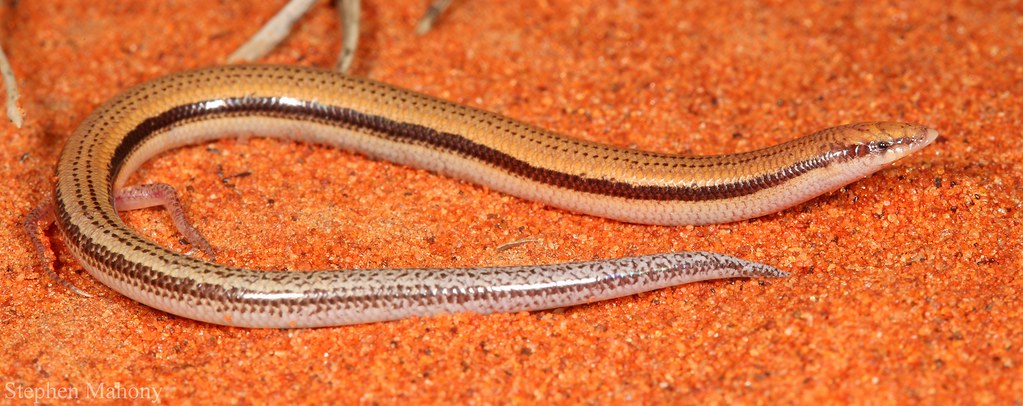
Lerista labialis by Stephen Mahony, on Flickr
As well as a single individual of Lerista aericeps.
Image may be NSFW.
Clik here to view.

Lerista aericeps by Stephen Mahony, on Flickr
We saw a few snakes, including a large Mulga which I didn't photograph and some nice burrowing species.
Most people dislike Blind Snakes, I kinda like them, though I agree they are a pain to photograph.
Image may be NSFW.
Clik here to view.

Ramphotyphlops endoterus by Stephen Mahony, on Flickr
Image may be NSFW.
Clik here to view.

Ramphotyphlops endoterus by Stephen Mahony, on Flickr
On the other hand this Narrow Banded Shovel-nosed Snake was exciting for the whole team, as they rarely turn up in the area, and are extremely attractive.
Image may be NSFW.
Clik here to view.

Brachyurophis fasciolatus by Stephen Mahony, on Flickr
Image may be NSFW.
Clik here to view.

Brachyurophis fasciolatus by Stephen Mahony, on Flickr
Image may be NSFW.
Clik here to view.

Brachyurophis fasciolatus by Stephen Mahony, on Flickr
Image may be NSFW.
Clik here to view.

Brachyurophis fasciolatus by Stephen Mahony, on Flickr
Image may be NSFW.
Clik here to view.

Brachyurophis fasciolatus by Stephen Mahony, on Flickr
Along with these, another Snake-like animal was picked up. This time, a Legless Lizard.
Image may be NSFW.
Clik here to view.

Delma nasuta by Stephen Mahony, on Flickr
Last but certainly not least were the Goannas we were lucky enough to track down.
Gould's Monitors were certainly the easiest of these to find, walking through our camp, digging around the ground in it and letting me get pretty close for some pics.
Image may be NSFW.
Clik here to view.

Varanus gouldii by Stephen Mahony, on Flickr
Image may be NSFW.
Clik here to view.

Varanus gouldii by Stephen Mahony, on Flickr
Image may be NSFW.
Clik here to view.

Varanus gouldii by Stephen Mahony, on Flickr
We also saw a number of Pygmy Mulga Monitors, a delightful small, quite beautiful species.
Image may be NSFW.
Clik here to view.

Varanus gilleni by Stephen Mahony, on Flickr
Image may be NSFW.
Clik here to view.

Varanus gilleni by Stephen Mahony, on Flickr
Image may be NSFW.
Clik here to view.

Varanus gilleni by Stephen Mahony, on Flickr
Image may be NSFW.
Clik here to view.

Varanus gilleni by Stephen Mahony, on Flickr
Image may be NSFW.
Clik here to view.
 Varanus gilleni by Stephen Mahony, on Flickr
Varanus gilleni by Stephen Mahony, on FlickrImage may be NSFW.
Clik here to view.

Varanus gilleni by Stephen Mahony, on Flickr
However my favourite find of the trip was this Short-tailed Monitor. This is the smallest species of Goanna in the world. On top of this it's quite attractive, displaying some nice red colour to match the sand of its surrounding.
Image may be NSFW.
Clik here to view.

Varanus brevicauda by Stephen Mahony, on Flickr
Image may be NSFW.
Clik here to view.

Varanus brevicauda by Stephen Mahony, on Flickr
Image may be NSFW.
Clik here to view.

Varanus brevicauda by Stephen Mahony, on Flickr
Image may be NSFW.
Clik here to view.

Varanus brevicauda by Stephen Mahony, on Flickr
Image may be NSFW.
Clik here to view.

Varanus brevicauda by Stephen Mahony, on Flickr
Image may be NSFW.
Clik here to view.

Varanus brevicauda by Stephen Mahony, on Flickr
Image may be NSFW.
Clik here to view.

Varanus brevicauda by Stephen Mahony, on Flickr
Unfortunately even the best trips come to an end. We soon found ourself driving out of the Desert, bid fairlwell by a pretty sunset over the Southern Cross in the town of Windorah.
Image may be NSFW.
Clik here to view.

Sunset on the Southern Cross by Stephen Mahony, on Flickr
Hope you guys enjoy the thread!
↧
Gekonidae
Diplodactylus conspicillatus
Image may be NSFW.
Clik here to view.![]()
Strophurus ciliaris aberrans
Image may be NSFW.
Clik here to view.![]()
Lucasium damaeum
Image may be NSFW.
Clik here to view.![]()
Lucasium stenodactylum
Image may be NSFW.
Clik here to view.![]()
Saltuarius cornutus
Image may be NSFW.
Clik here to view.![]()
Carphodactylus laevis
Image may be NSFW.
Clik here to view.![]()
and a Pygopodidae
Pygopus nigriceps
Image may be NSFW.
Clik here to view.![]()
Image may be NSFW.
Clik here to view.

Strophurus ciliaris aberrans
Image may be NSFW.
Clik here to view.

Lucasium damaeum
Image may be NSFW.
Clik here to view.
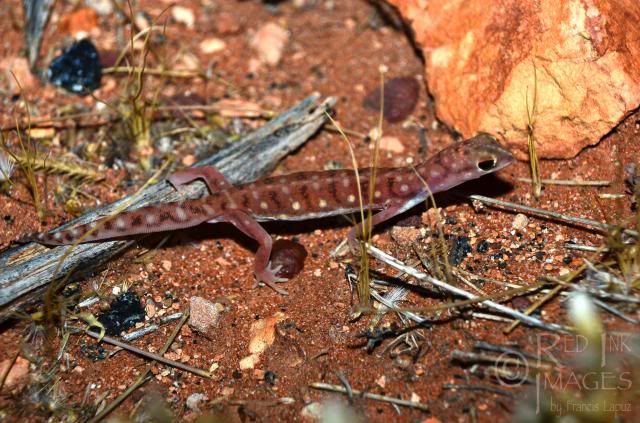
Lucasium stenodactylum
Image may be NSFW.
Clik here to view.

Saltuarius cornutus
Image may be NSFW.
Clik here to view.
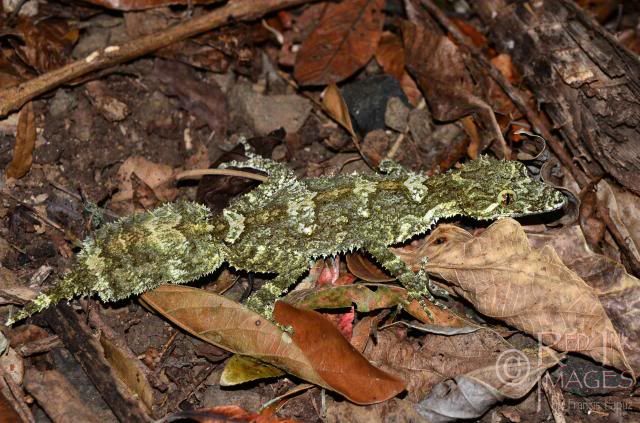
Carphodactylus laevis
Image may be NSFW.
Clik here to view.
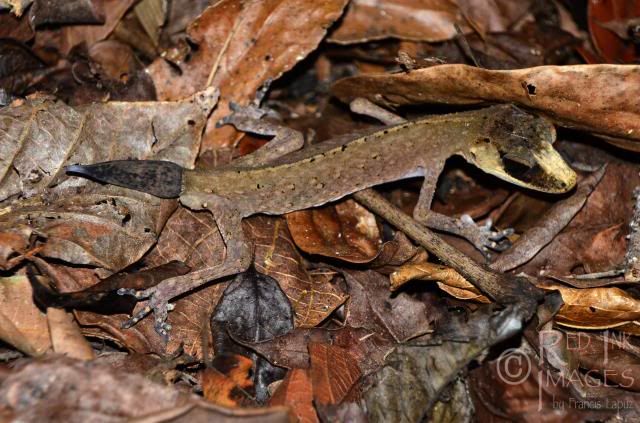
and a Pygopodidae
Pygopus nigriceps
Image may be NSFW.
Clik here to view.

↧
frogs and geckos field trip
hi guys, i wanted to go on a feild trip to veiw tree frogs and geckos in there natural habitat, would like to see the sort of spots there hiding etc for tank inspiration and just appreciate them in there natural invironment.
and where good in sydney on the northern beaches? or the sort of areas i should look?
Mitch
and where good in sydney on the northern beaches? or the sort of areas i should look?
Mitch
↧
Adventurous Carpet
This guy was found at work today huddled up in the corner with what looks like a full belly. There's a snake catcher coming out now to move it to the grassed area.
Image may be NSFW.
Clik here to view.![]()
Image may be NSFW.
Clik here to view.![]()
I say adventurous, because this is the view from the level below where this guy is:
Image may be NSFW.
Clik here to view.![]()
He looks very healthy from what I could see.
Image may be NSFW.
Clik here to view.

Image may be NSFW.
Clik here to view.

I say adventurous, because this is the view from the level below where this guy is:
Image may be NSFW.
Clik here to view.

He looks very healthy from what I could see.
↧
↧
King Cobras (pic heavy)
I was lucky enough to do a king cobra trip with Bali reptile rescue and Longqi on here. We did a 2 day trip and relocated 3 nests, 85 eggs, and 2 female kings in west bali.
The first king was an impressive 3.5m female who was a little flightier then usual apparently.
Image may be NSFW.
Clik here to view.![]()
Image may be NSFW.
Clik here to view.![]()
Her nest was in a pretty tricky spot in a clump of bamboo. Recovered 35 eggs from her.
Image may be NSFW.
Clik here to view.![]()
We then went to a second nest, however, couldnt find the female so just recovered her nest.
Image may be NSFW.
Clik here to view.![]()
It wasnt all reptiles though, we also got to feed these adorable rehab juvenile hornbills.
Image may be NSFW.
Clik here to view.![]()
That night we went herping through some nice paddies getting a banded krait, retic, a couple of bronze backs, rat snake, banded wolf snake, assorted toads, one mystery litoria, bali chameleon and a tokay. (i apologise for the average photos).
Image may be NSFW.
Clik here to view.![]()
Tokay
Image may be NSFW.
Clik here to view.![]()
retic
Image may be NSFW.
Clik here to view.![]()
retic
Image may be NSFW.
Clik here to view.![]()
Banded krait
The next day we went back into king country and found the third females nest. A very small number of eggs at only 16. We found out why when we found her in a rock pile as she was only 2m long. She was still impressive at that size though putting on a nice defensive display.
Image may be NSFW.
Clik here to view.![]()
Her nest
Image may be NSFW.
Clik here to view.![]()
Her habitat
Image may be NSFW.
Clik here to view.![]()
Image may be NSFW.
Clik here to view.![]()
Image may be NSFW.
Clik here to view.![]()
Image may be NSFW.
Clik here to view.![]()
Image may be NSFW.
Clik here to view.![]()
After bagging her (and taking some pics) he headed back to the depo where a few of the rehab, and resident, reptiles were waiting.
Image may be NSFW.
Clik here to view.![]()
All up it was a fantastic trip and i would strongly recommend anyone heading to bali to check them out!
The first king was an impressive 3.5m female who was a little flightier then usual apparently.
Image may be NSFW.
Clik here to view.
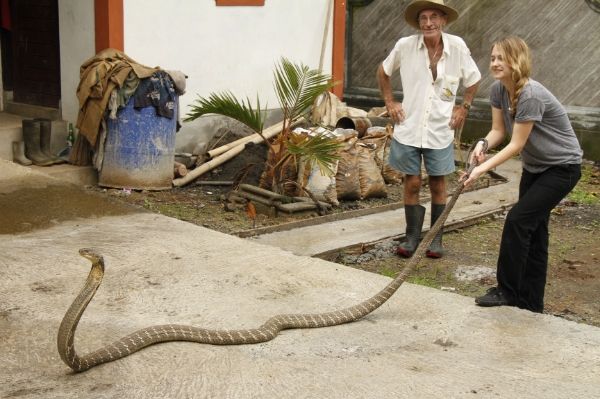
Image may be NSFW.
Clik here to view.
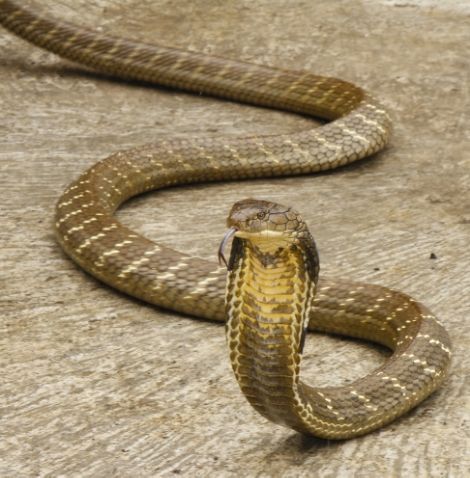
Her nest was in a pretty tricky spot in a clump of bamboo. Recovered 35 eggs from her.
Image may be NSFW.
Clik here to view.
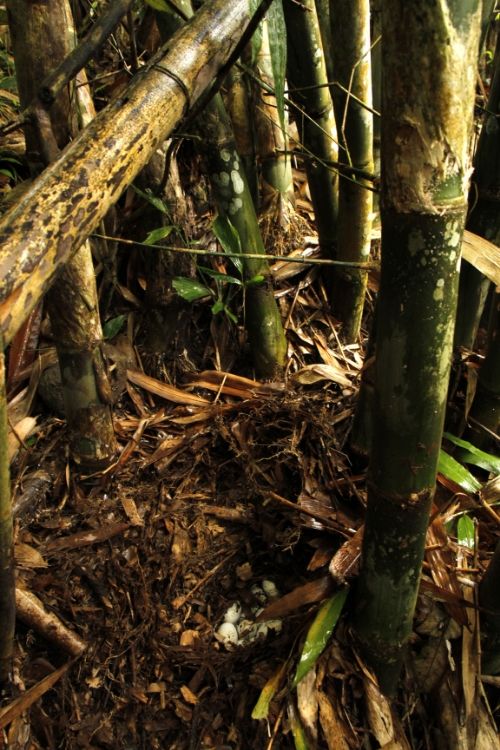
We then went to a second nest, however, couldnt find the female so just recovered her nest.
Image may be NSFW.
Clik here to view.

It wasnt all reptiles though, we also got to feed these adorable rehab juvenile hornbills.
Image may be NSFW.
Clik here to view.
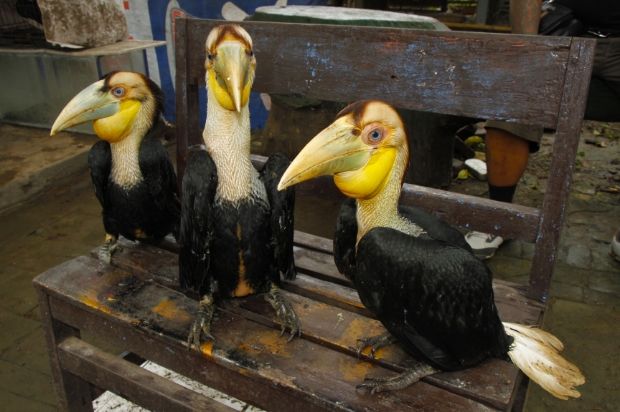
That night we went herping through some nice paddies getting a banded krait, retic, a couple of bronze backs, rat snake, banded wolf snake, assorted toads, one mystery litoria, bali chameleon and a tokay. (i apologise for the average photos).
Image may be NSFW.
Clik here to view.
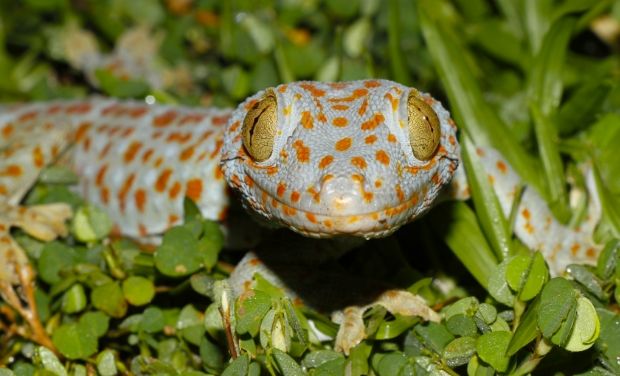
Tokay
Image may be NSFW.
Clik here to view.
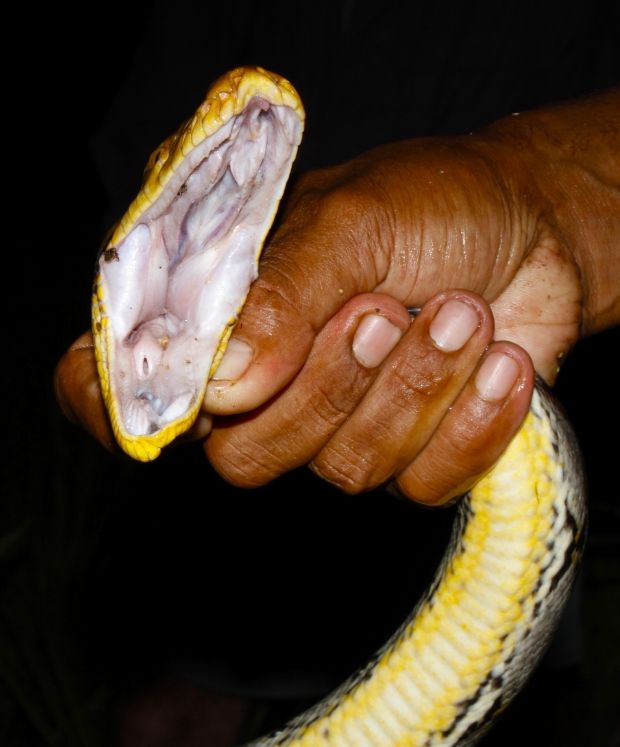
retic
Image may be NSFW.
Clik here to view.

retic
Image may be NSFW.
Clik here to view.
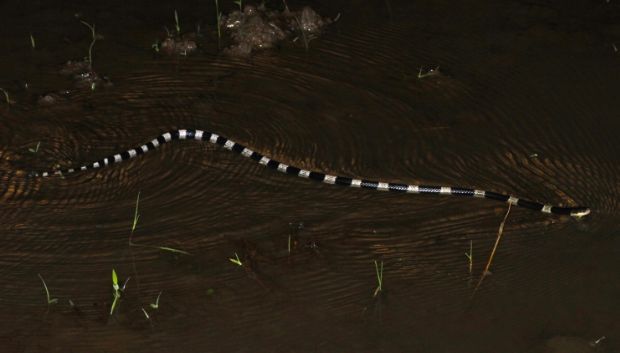
Banded krait
The next day we went back into king country and found the third females nest. A very small number of eggs at only 16. We found out why when we found her in a rock pile as she was only 2m long. She was still impressive at that size though putting on a nice defensive display.
Image may be NSFW.
Clik here to view.
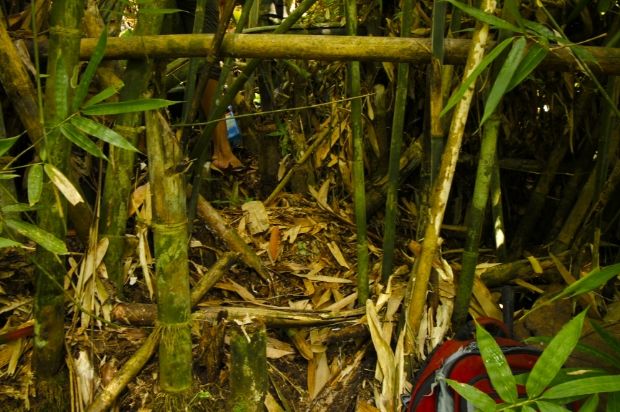
Her nest
Image may be NSFW.
Clik here to view.

Her habitat
Image may be NSFW.
Clik here to view.
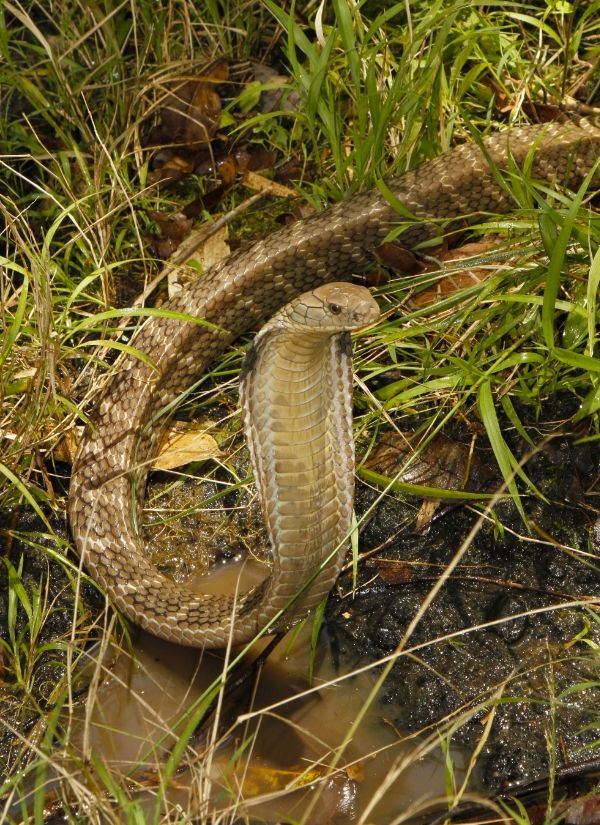
Image may be NSFW.
Clik here to view.
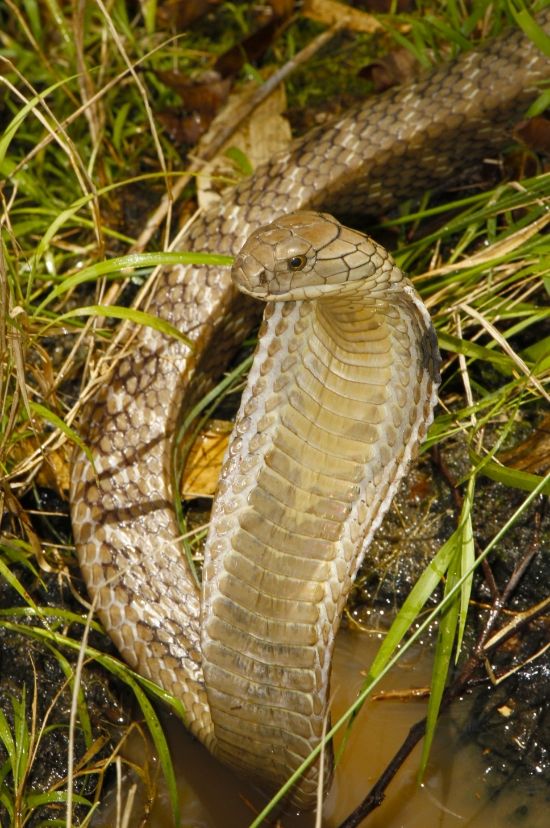
Image may be NSFW.
Clik here to view.

Image may be NSFW.
Clik here to view.
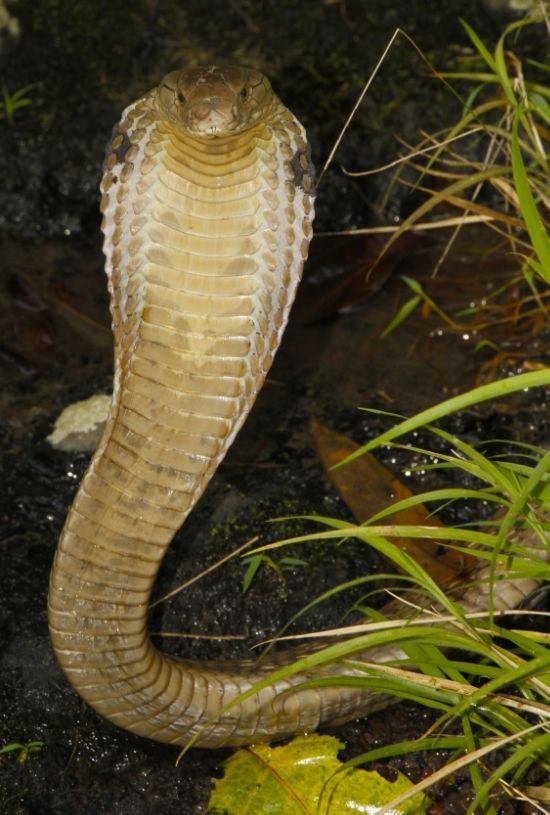
Image may be NSFW.
Clik here to view.

After bagging her (and taking some pics) he headed back to the depo where a few of the rehab, and resident, reptiles were waiting.
Image may be NSFW.
Clik here to view.
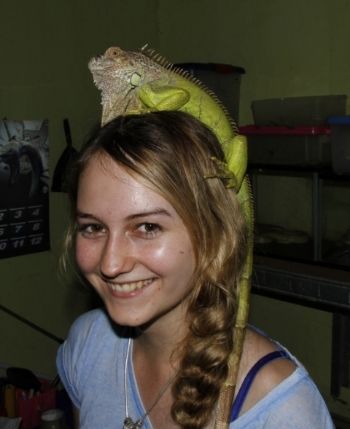
All up it was a fantastic trip and i would strongly recommend anyone heading to bali to check them out!
↧
Few pics from last night around Townsville
First night out for the year, after a bit of rain the past couple of days. 4 Carpets, 1 Hatchling ven that was either a Coastal Taipan or Brown (off the road and into the grass before we could get a decent look), a Gecko that we found while looking for the ven off the side of the road (lol) and a BTS.
Image may be NSFW.
Clik here to view.![Click image for larger version.
Name: IMG_2598.jpg
Views: 44
Size: 287.8 KB
ID: 303879]()
Image may be NSFW.
Clik here to view.![Click image for larger version.
Name: IMG_2589.jpg
Views: 45
Size: 416.1 KB
ID: 303880]()
Image may be NSFW.
Clik here to view.![Click image for larger version.
Name: IMG_2605.jpg
Views: 59
Size: 65.8 KB
ID: 303881]()
Image may be NSFW.
Clik here to view.![Click image for larger version.
Name: IMG_2632.jpg
Views: 58
Size: 466.1 KB
ID: 303882]()
Image may be NSFW.
Clik here to view.![Click image for larger version.
Name: IMG_2642.jpg
Views: 55
Size: 303.7 KB
ID: 303883]()
Image may be NSFW.
Clik here to view.![Click image for larger version.
Name: IMG_2645.jpg
Views: 55
Size: 404.9 KB
ID: 303884]()
Image may be NSFW.
Clik here to view.![Click image for larger version.
Name: IMG_2660.jpg
Views: 68
Size: 359.7 KB
ID: 303885]()
Image may be NSFW.
Clik here to view.![Click image for larger version.
Name: IMG_2593.jpg
Views: 51
Size: 51.3 KB
ID: 303886]()
Image may be NSFW.
Clik here to view.
Image may be NSFW.
Clik here to view.
Image may be NSFW.
Clik here to view.
Image may be NSFW.
Clik here to view.
Image may be NSFW.
Clik here to view.
Image may be NSFW.
Clik here to view.
Image may be NSFW.
Clik here to view.
Image may be NSFW.
Clik here to view.
↧
Friendly visitor
Image may be NSFW.
Clik here to view.![Click image for larger version.
Name: image.jpg
Views: 135
Size: 214.9 KB
ID: 304122]()
Image may be NSFW.
Clik here to view.![Click image for larger version.
Name: image.jpg
Views: 79
Size: 47.3 KB
ID: 304121]()
Image may be NSFW.
Clik here to view.![Click image for larger version.
Name: image.jpg
Views: 76
Size: 85.8 KB
ID: 304120]()
A friendly coastal peeking into my rat tubs.
Three times he went crawling back into the roof after seeing me, and every time after ten minutes he'd be back.
He's now in across the roads crops, with a nice rat treat, for being a friendly visitor.
(Sorry the last pic is on an angle, and the middle picture is Instagram edited).
Clik here to view.
Image may be NSFW.
Clik here to view.
Image may be NSFW.
Clik here to view.
A friendly coastal peeking into my rat tubs.
Three times he went crawling back into the roof after seeing me, and every time after ten minutes he'd be back.
He's now in across the roads crops, with a nice rat treat, for being a friendly visitor.
(Sorry the last pic is on an angle, and the middle picture is Instagram edited).
↧
Watagans d/n herp
image.jpg (225.1 KB)
image.jpg (132.9 KB)
image.jpg (164.7 KB)
image.jpg (288.9 KB)
image.jpg (132.9 KB)
image.jpg (164.7 KB)
image.jpg (288.9 KB)
↧
↧
advice on firs time herping south straddy
Hey I had a quick read through the helping for noobs thread but has anyone got any tips for specifically southstradbroke island. Heading over for the weekend and always wanted to go out for a look and will this time. Would love see monitors and pythons! Thanks everyone.
↧
I would like to see Pythons
Hi Guys I'm going for 4 days to Lamington national park border Nsw / Queensland. I'm a photographer and I would like to found it some pythons around national park. Somebody to knows where its good area for Pythons? Regards :)
↧
Not sure what type of snake this is?
Found 50 ks from chinchilla qld anyone know what it is?
↧